To run the forums, host the website, and travel, I charge a universal service fee for my reviews. This in-depth review was sponsored by Specialized Bicycle Components. My goal is to be transparent and unbiased with you, this video and writeup are not meant to be an endorsement of Specialized products. I welcome your corrections, additions, and feedback in the comments below and the Specialized electric bike forums.
Observations:
- The new Specialized SL (Super Light) 1.1 motor system is very impressive… not only is it compact and lightweight at just 4.3lbs, it actually provides good torque and satisfying power. It can operate above 120 RPM so you can pedal fast in low gears without losing support, and it functions as a Class 3 motor supporting top speeds of 28mph very capably. It fades out smoothly and does not introduce drag if the bike is pedaled in zero mode or above 28mph (45km/h)
- The main battery can be removed with help from your local shop, so the bike can be ridden non-electric at 24.8lbs. With the main battery removed, you can ship the bicycle on airplanes, and since the Range Extenders are just 160 watt hours, most airlines will let you carry them onto the plane. The bike can then run solely off of a range-extender when you arrive at your destination
- The Creo SL Expert and Expert EVO both come in six frame sizes, the main differences for the EVO gravel grinder setup are flared handlebars, wider treaded tires, and a seat post dropper… which crates a weight difference of roughly 1.9lbs
- The Creo SL Expert models feature Shimano Di2 electronic shifting which is quick, precise, and reliable. You won’t get cable stretch as with mechanical shifters, which means less maintenance. It does not offer multi-shift, so there’s more single clicks, but it requires less hand effort
Pros:
- No compromises here, I love that the frame has provisions for bottle cages on the downtube and seat tube, and that there are mounting points for fenders and a rear rack (though you’ll need a different seat tube binder in 27.2mm with threaded eyelets to make this possible
- Incredibly stealthy design… this thing genuinely looks like an analog bicycle because the motor casing is so compact and the battery is completely internalized. There are no big LCD displays to distract or cause glare (unless you add the optional TCD LCD for $65), and the LED readouts on the TCU interface can be disabled using the Mission Control app
- Specialized has designed their electric bikes to utilize Ant+ wireless for heart rate monitors, they also track your pedal cadence and torque for feedback about calories burned… this is genuine exercise equipment with support for athletic training
- Excellent weight distribution, it’s all kept low and centered on the frame. The bike balanced well when lifting from the center (as I weighed it)
- Motor activation is fairly smooth and fluid (both powering up and cutting out), it’s a zippy noticeable feeling that beats all of the other lightweight road bike models I’ve tested including 250 watt hub motors and the Fazua mid-drive, it’s similar to a Bosch Gen 4 Speed, just a lot smaller, lighter, and less powerful for steep climbs
- Shimano Di2 shifting is extremely quick and precise, it’s going to be easier on the drivetrain because it stays true with less cable stretch happening over time. The system only allows single shifts (up or down) so you’re less likely to mash gears and damage the cassette, chain, and derailleur
- There’s no reduction gearing or drag here, when riding completely unassisted or pedaling beyond the supported 28mph (45km/h) top speed, the bikes feel really smooth and natural vs. having a big “wall” cutout feeling. I tested several models without assist and still enjoyed riding
- Tight tolerance on the battery pack alignment and mounting systems for the main battery and Range Extender battery, you don’t hear them rattling around at higher speeds, even off-road on the gravel we traversed with the EVO model. Specialized designed a thick rubber band that surrounds the battery to secure it to a Z-Cage bottle holder. It’s a simple and lightweight solution that also blends in nicely
- Wider Boost hub spacing provides a sturdier spoke bracing angle for strength and stability at high speeds, both thru-axles are thicker 12mm with threaded quick release for easy transport, and mobile fixes
- Extra-long rubber slap guard protects the carbon frame from chain strikes when riding on bumpy terrain, it’s a clean lightweight design that’s noticeably longer than some competing products, it seems very effective
- Narrow-wide tooth pattern on the lightweight aluminum alloy chainring reduces drops and provides a tighter connection, so you and the motor achieve maximum power transfer when pedaling
- The Shimano Deore XT Di2 derailleur is tucked close to the frame and offers a one-way clutch that reduces chain bounce at higher speeds and on off-road gravel sections, click it up and to the left to engage or click it down and to the right to perform drivetrain maintenance or remove the rear wheel more easily
- I prefer the carbon fiber seat post on the Standard Creo SL Expert models to the dropper post that comes with the EVO. It lowers weight and provides more comfort in my experience, and I might consider the addition of a carbon fiber dropper seatpost from Kinekt or the Specialized Cobble Gobbler product
- Vast network of dealers makes it easier to see, touch, and get fitted on the bike, excellent two year comprehensive warranty with lifetime frame and wheelset… Specialized is now securely positioned as one of the most innovative and committed ebike makers in North America, I reviewed their first entry way back in 2012 and they’ve only gotten better while pushing the boundaries of speed pedelecs while other companies shied away based on European standards. Thanks for your bravery and commitment Specialized!
- It’s awesome that Specialized has allowed you to choose which battery is drawn down first (if you’re using the optional Range Extender pack). You can drain them both in tandem, using the Mission Control app, or prioritize the Range Extender which is then removable for independent charging at work etc. Alternatively, if you choose to run off of both packs simultaneously, you won’t be cycling one battery constantly, which wears through its cycles faster
- Charlie from ElectriCityBikes in Washington, DC told me that in addition to a rear rack and fenders, you an have a dealer wire in lights for this bike. It’s a custom job and I cannot verify it, but that sounds great for people who want a “do everything” platform and don’t want to mess with removable lights
Cons:
- As lightweight, comfortable, aerodynamic, and cool as the ROVAL carbon fiber wheels are, the deep-dish design can be influenced by crosswinds more easily, which can impact steering or knock the bike over when parked
- There’s only one color choice for the Expert and Expert EVO models. You’ll have to go down to the Comp Carbon or Comp models for multiple choices
- Be sure that you purchase a left-entry Specialized Z-Cage bottle holder if you buy the Range Extender battery pack, because the cable comes out of the left side of the battery and the security notch will then be aligned with the front of the battery… we had a right-entry Z-Cage on one of the demo bikes and as a result, the battery didn’t seat quite right
- The Range Extender battery pack does not come with the cable required to connect to the main frame of the bike when riding, this costs $45 extra. Also, the Y splitter charging cable, that fills the main battery and an optional Range Extender simultaneously, costs $65 extra
- The Shimano Di2 electronic shifting system does not run of of the main ebike battery, it must be charged separately an uses a smaller proprietary charger (it plugs in to the end of the right dropper bar), the charger is small and easy to misplace, so be extra careful with it
- Unlike the Turbo Levo models, the Creos do not include a remote button pad with the S, +, -, and Walk Mode… so you have to take your hands off the handlebar to switch modes by interacting with the TCU button pad on the top tube, and I don’t think there’s a walk mode here on this ebike. Hold the S button on the TCU to go to no-assist mode
- The TCU LED console is pretty decent, but it doesn’t show your current speed, max speed, trip distance, range, or any other interesting stats. So, it’s nice that Specialized has an optional TCD (LCD display) for $90 and a free smartphone app offering more feedback. It would be useful to somehow charge your phone off of the main ebike battery using a USB charging port or wireless charging mount
- There’s no shift sensing built into the Specialized motor controllers, and this can lead to increased chain and sprocket wear if you don’t back off a bit on your pedaling while shifting… though it wasn’t a big issue for me during the test rides, the lower powered 35 newton meter torque rating of the motor and multi-sensing controller means you shouldn’t cause as much drivetrain damage from poor shifts
- The primary battery pack is not designed to be removed, you’ll need to remove the motor and bottom bracket with help from your shop. If you attempt this yourself, be very careful with the level of bolt and clamp tightness given the carbon fiber frame elements. In short, the non-removable battery means you can’t charge or store separately from the frame. This could be an inconvenience for commuters who cannot bring their bikes inside and don’t have a charging port near the bike rack. In those situations, buy a Range Extender battery which can be charged independently
- The charge port on the bike frame is very low, so you have to bend way over, and it’s positioned in the path of the left crank arm which could snag and pop the plug out… ideally it would be located on the drivetrain side of the bike vs. the brake side because the proper way to lean and lay a bike down (that doesn’t have a kickstand) is to do so on the non-drive side
- No provisions for a kickstand, this is a minor gripe considering the use case of these lightweight performance road style ebikes… at least they included bottle cage bosses, and rack and fender mounts. Consider an aftermarket crank arm kickstand or downtube kickstand from Topeak
- Minor consideration here, I’ve seen Specialized launch really custom hardware before and then change it up within a year or two, dropping support for replacement parts. Their IP67 rated motor, battery, and display all seem solid, I just hope they stock up on replacement bits so people who make the big purchase can keep their bikes on the road as their technology advances forward… they’re just a lot more custom and less modular than Bosch, for example, which supports their motor and battery designs for 10+ years
- This ebike does utilize a brand new motor system from an unproven German manufacturer. I was told by a shop owner that he’s been testing the motor for nearly two years (at the time of this review) and really put it through its paces without issue, but it’s still new and somewhat unknown
- Take extra care when unplugging the range extender cable from the bike, because there’s a twist lock feature that might be engaged and you could crack the plastic if you don’t check for it. I saw several charge cable ends with chips and cracks in the port plug, though it did not seem to affect their ability to function properly
- Minor consideration here, the older Turbo electric bike products from Specialized used a magnetic Rosenberger plug that would easily disconnect if you tripped over the cable, but the new cables are more plastic friction-stick that could pull the bike over. And, be careful with the pedals and cranks once the bike is plugged in, because the charging port is loated very close to the left crank arm

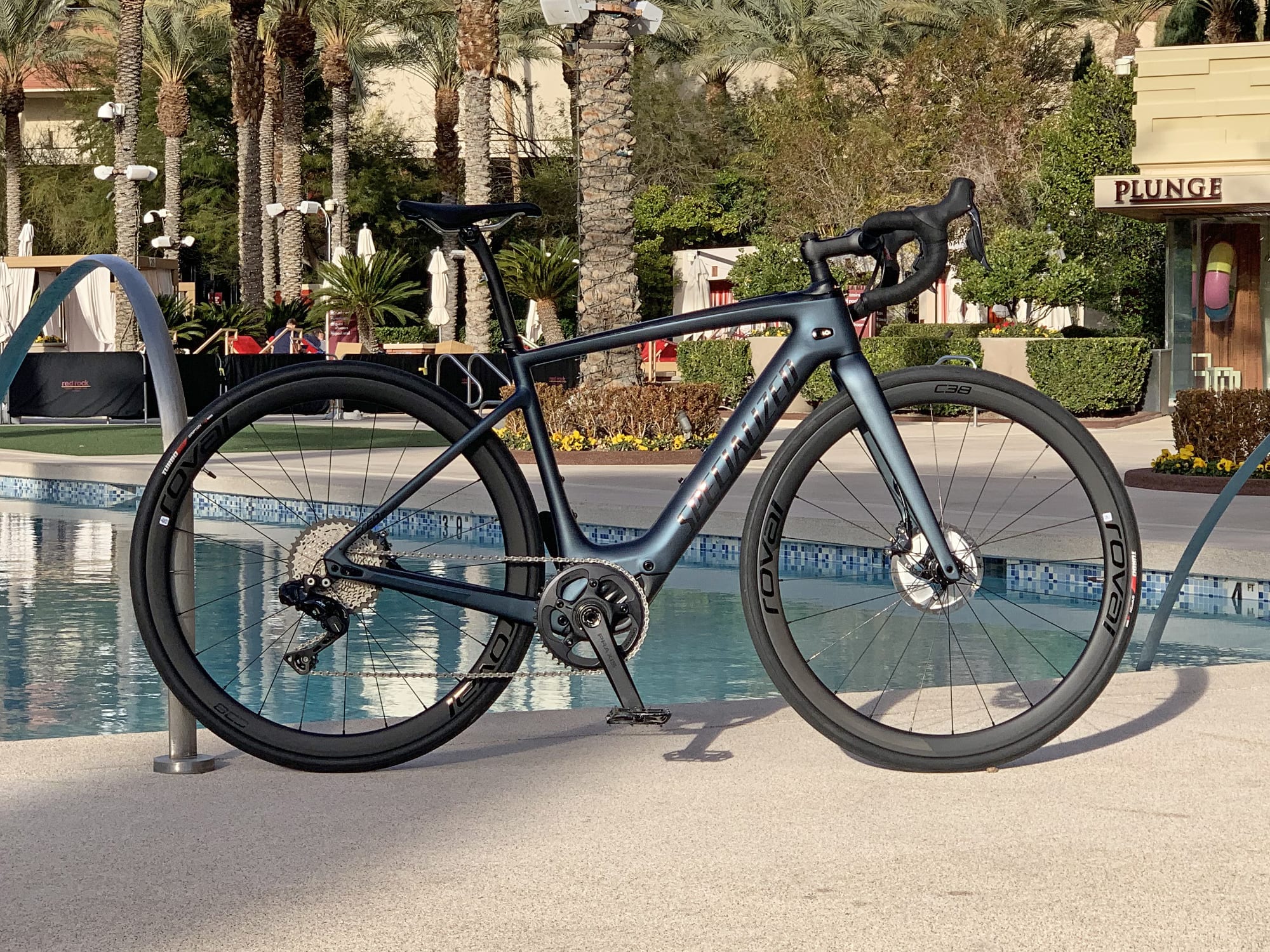
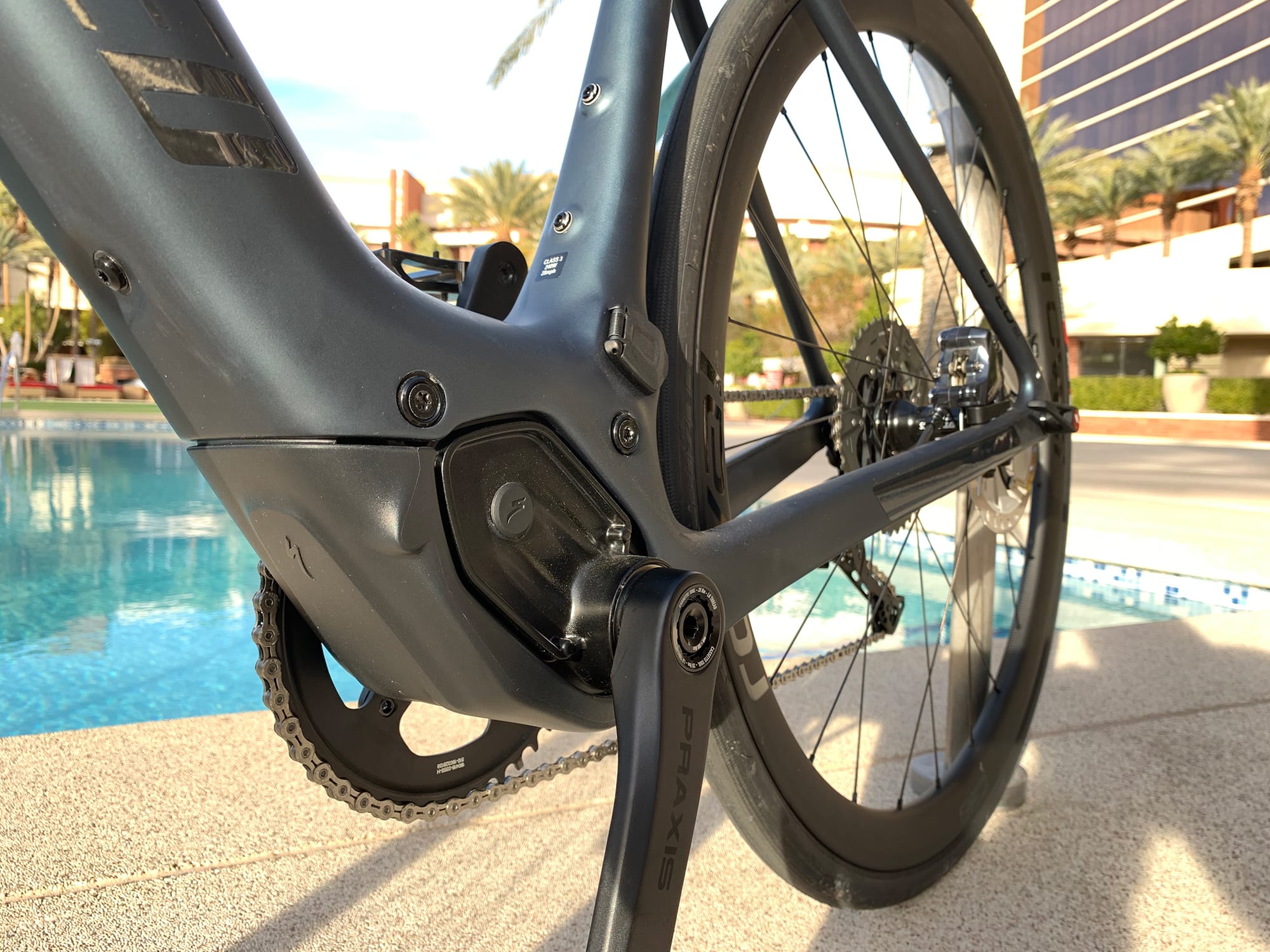
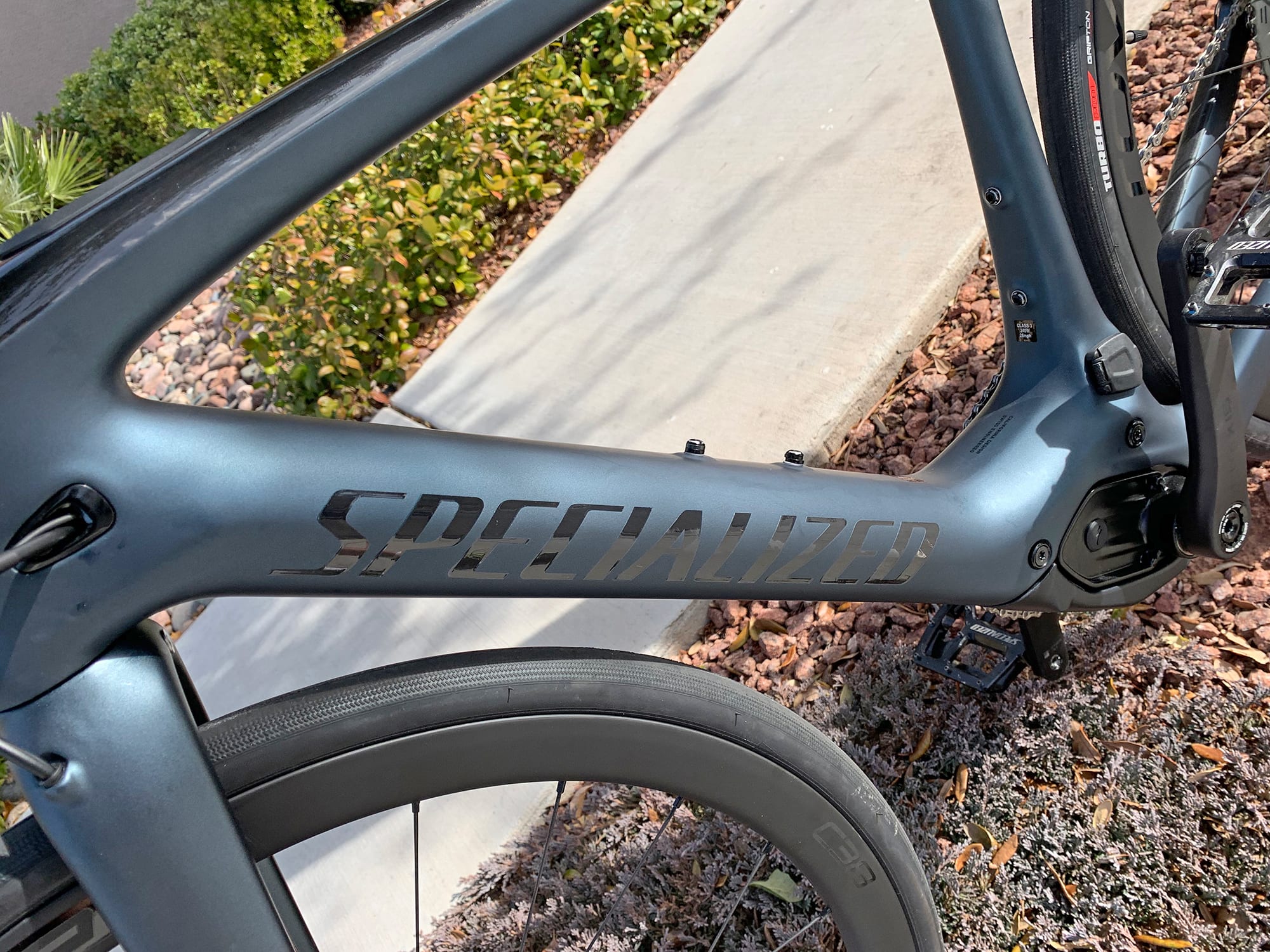
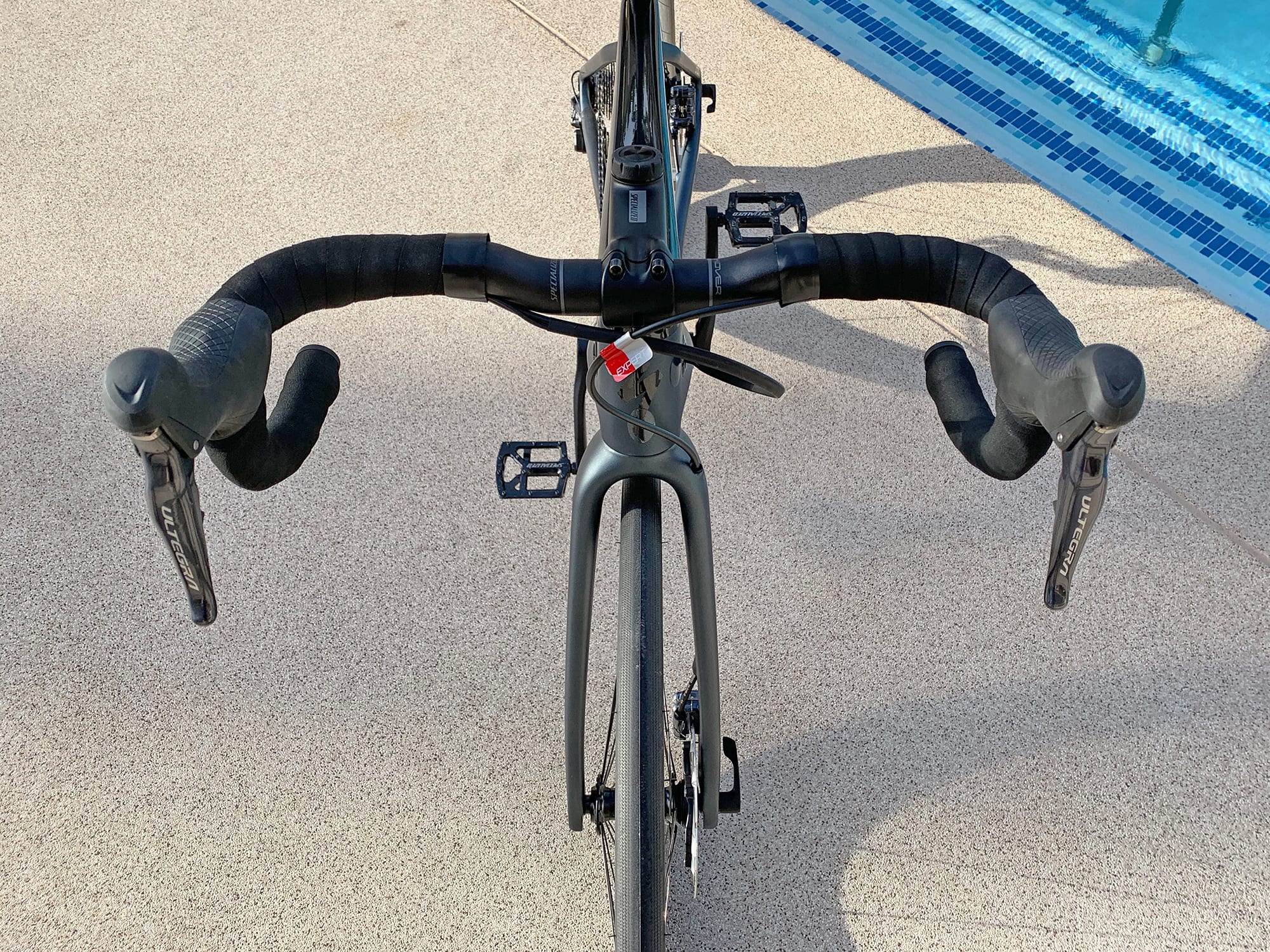
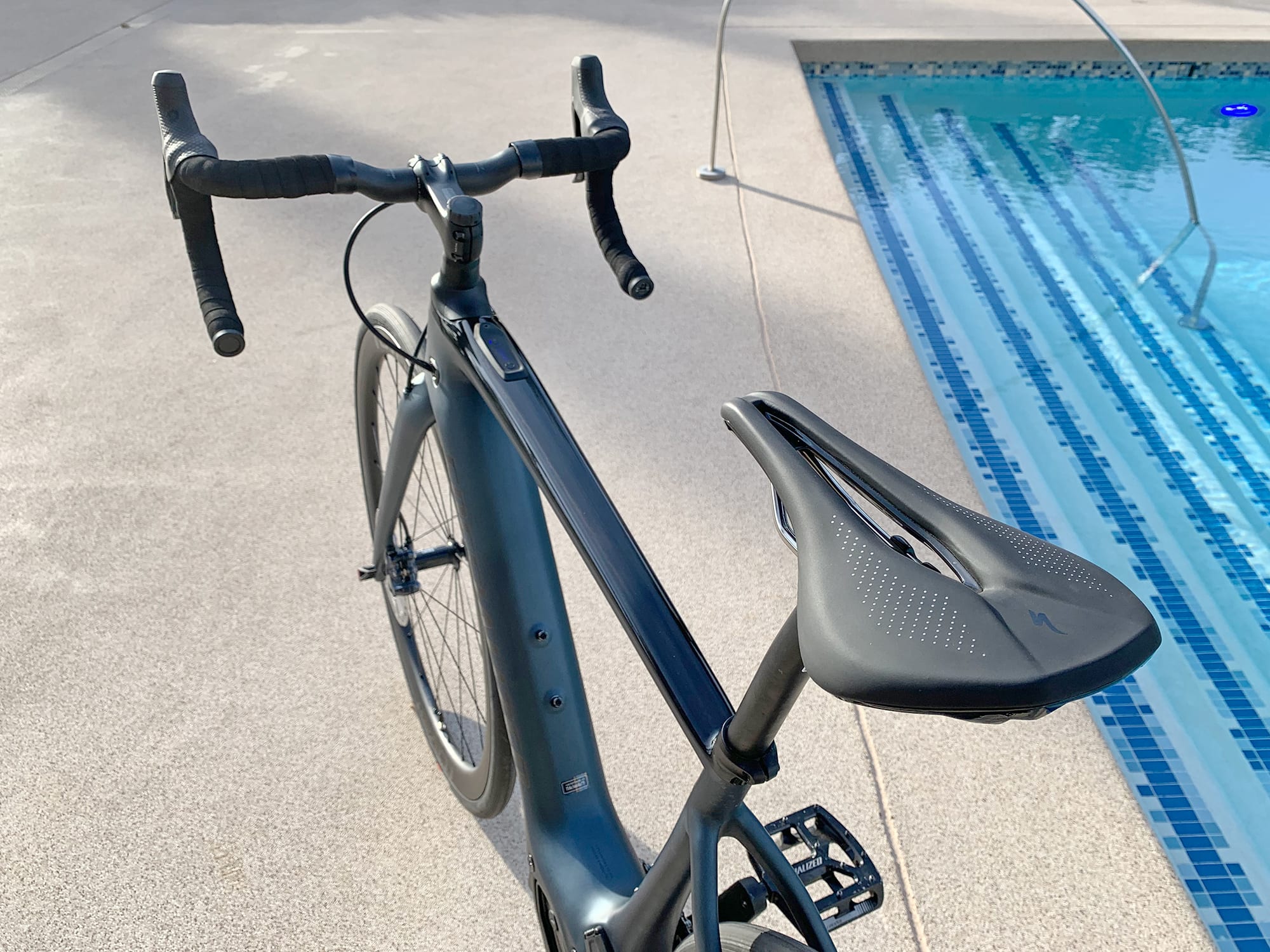
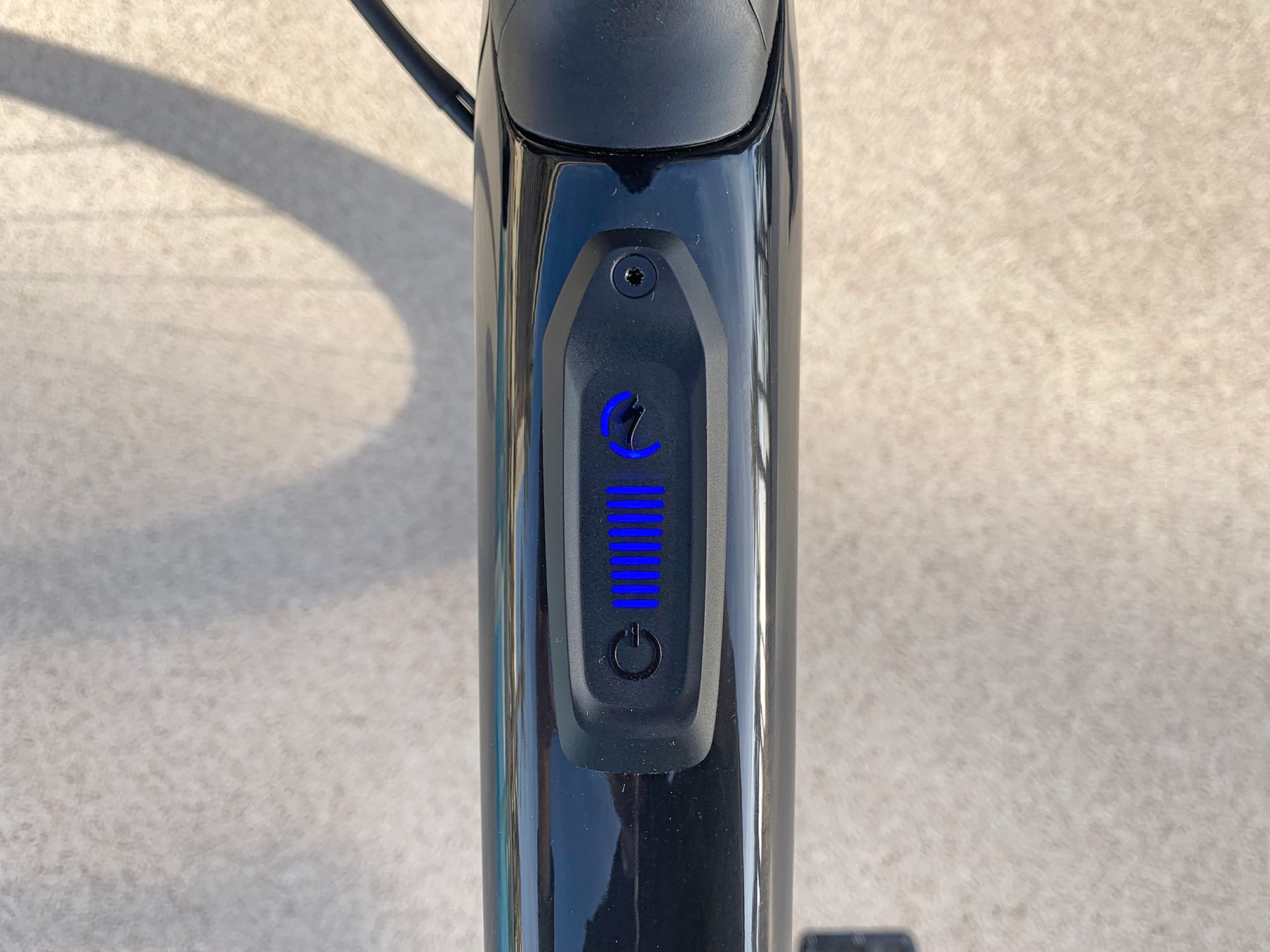
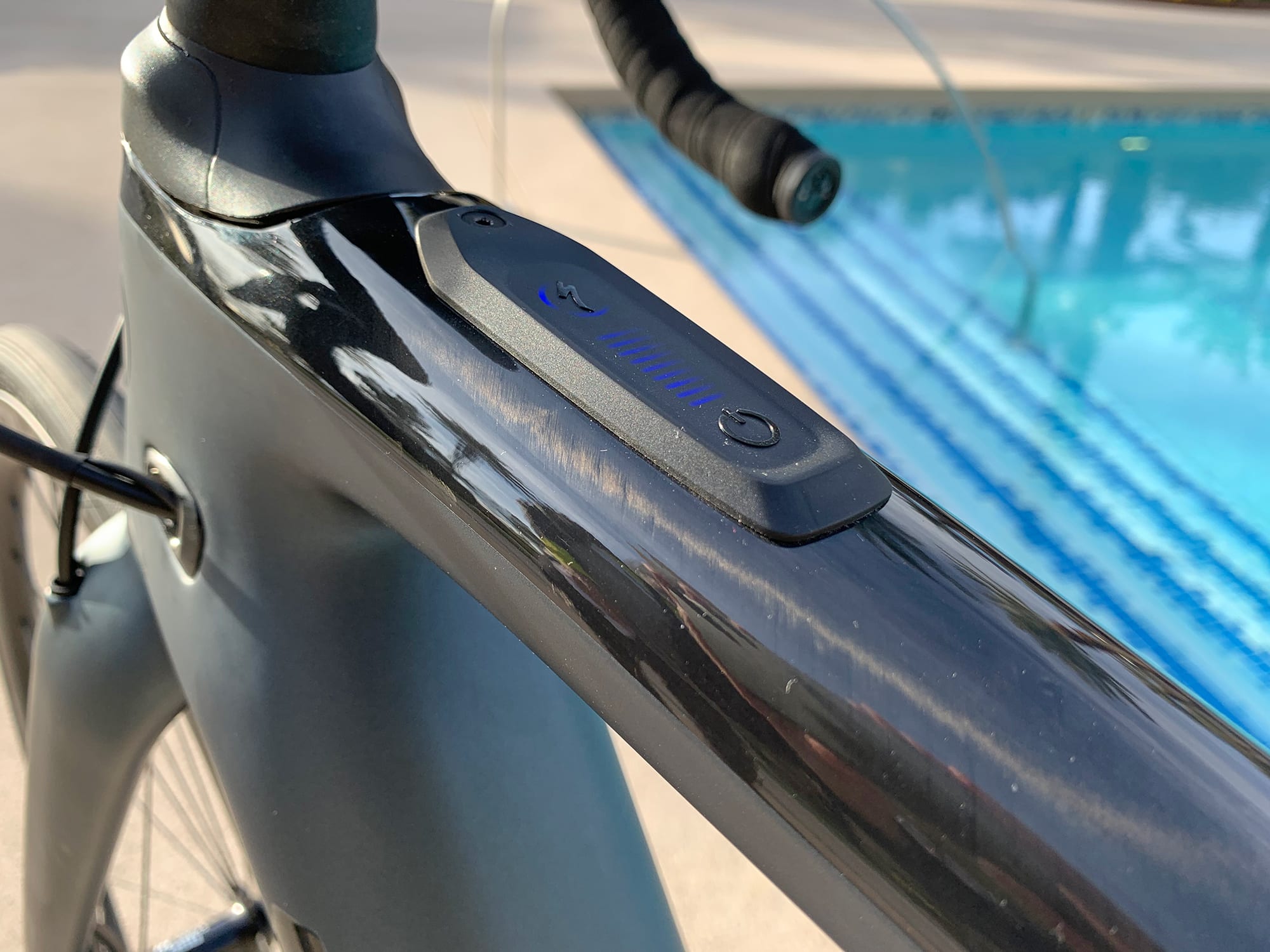

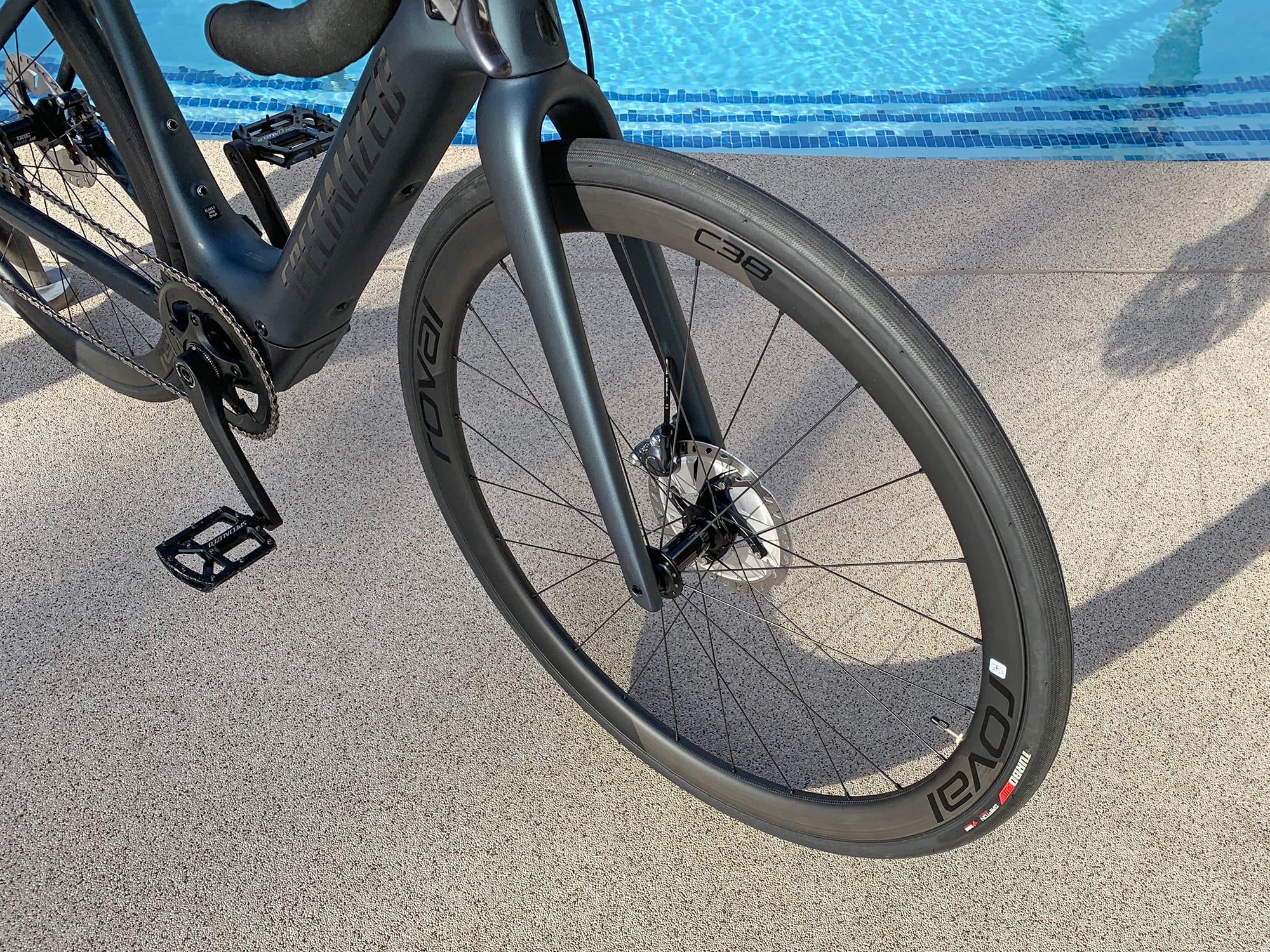
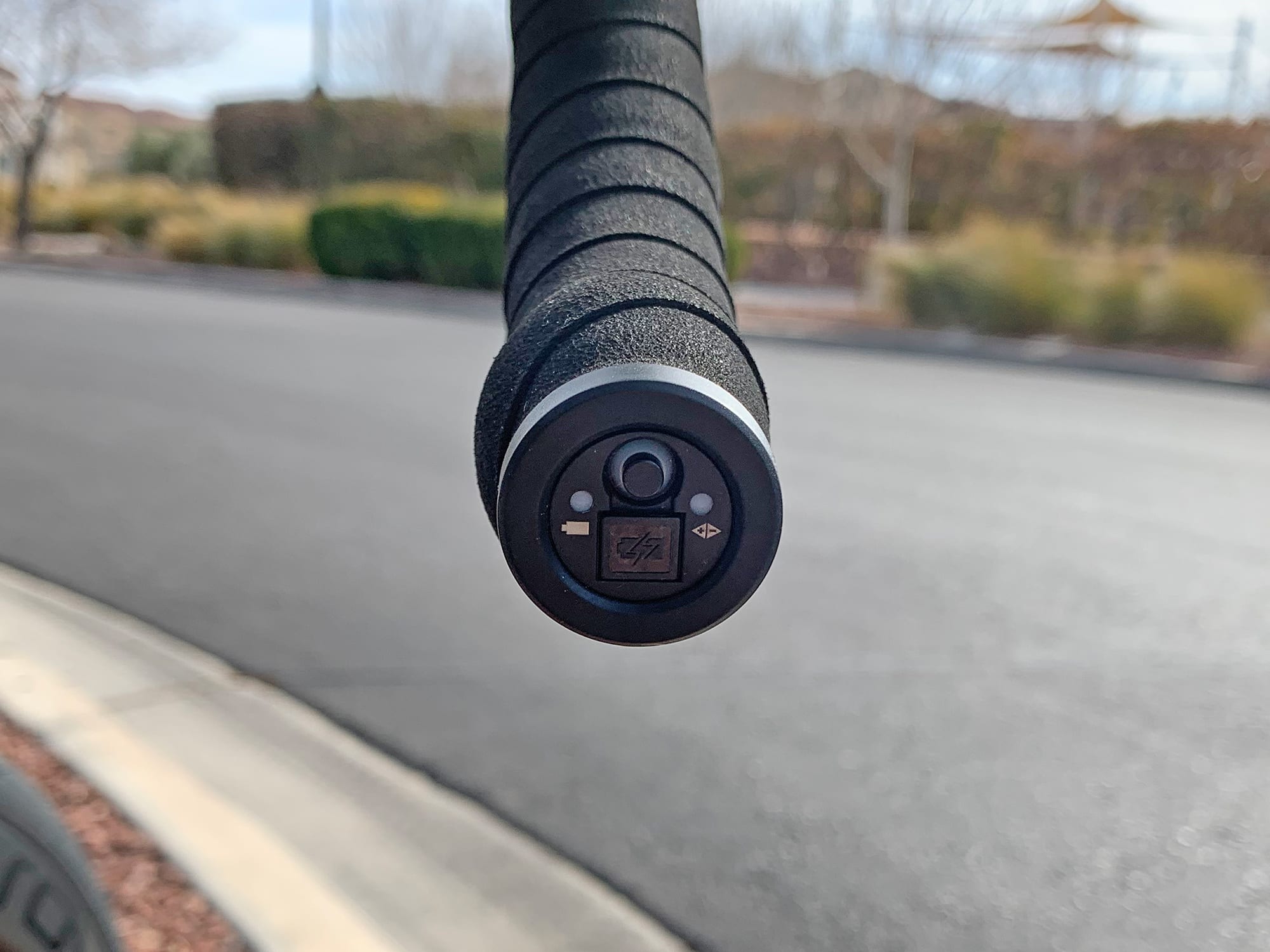
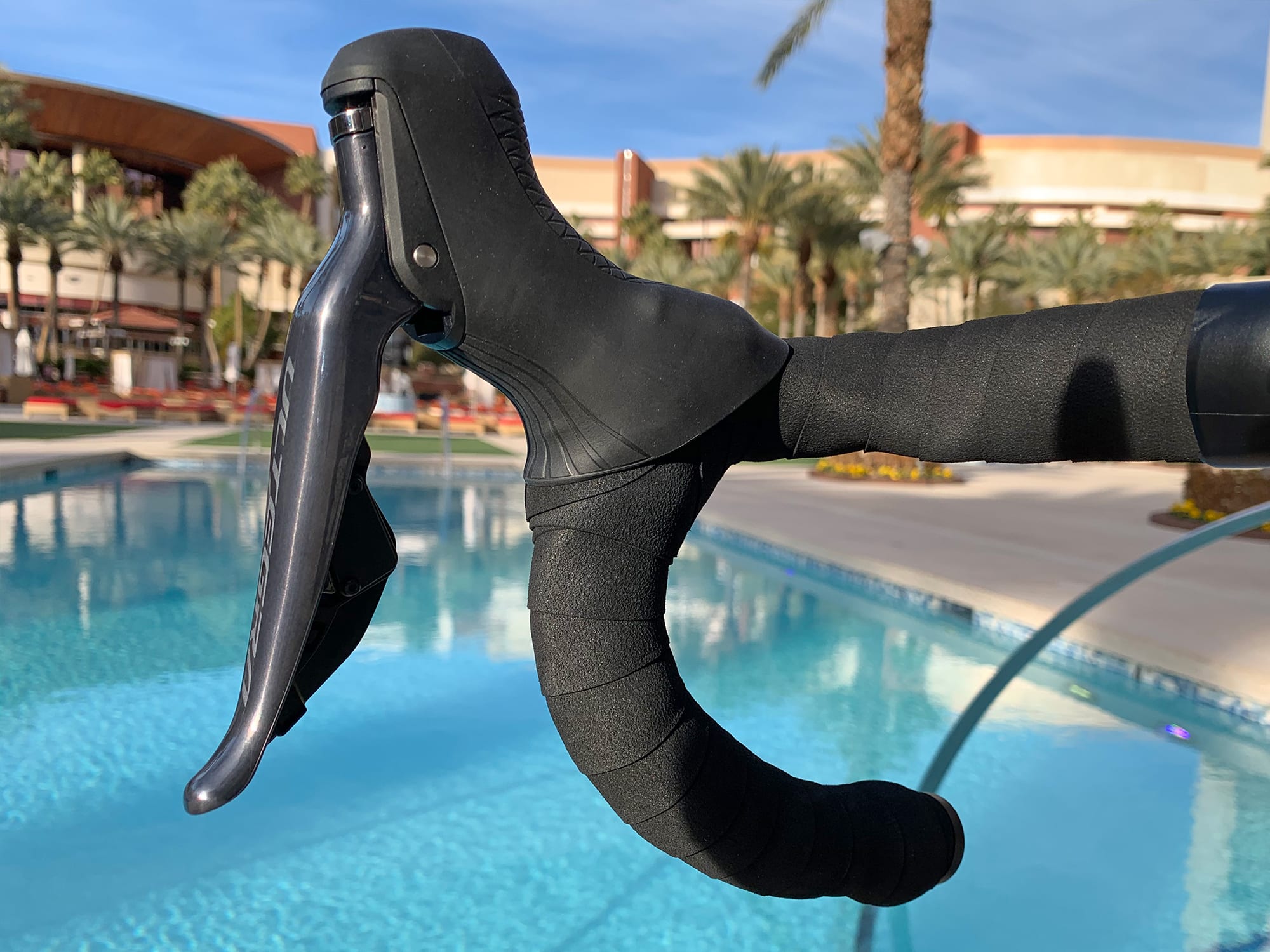
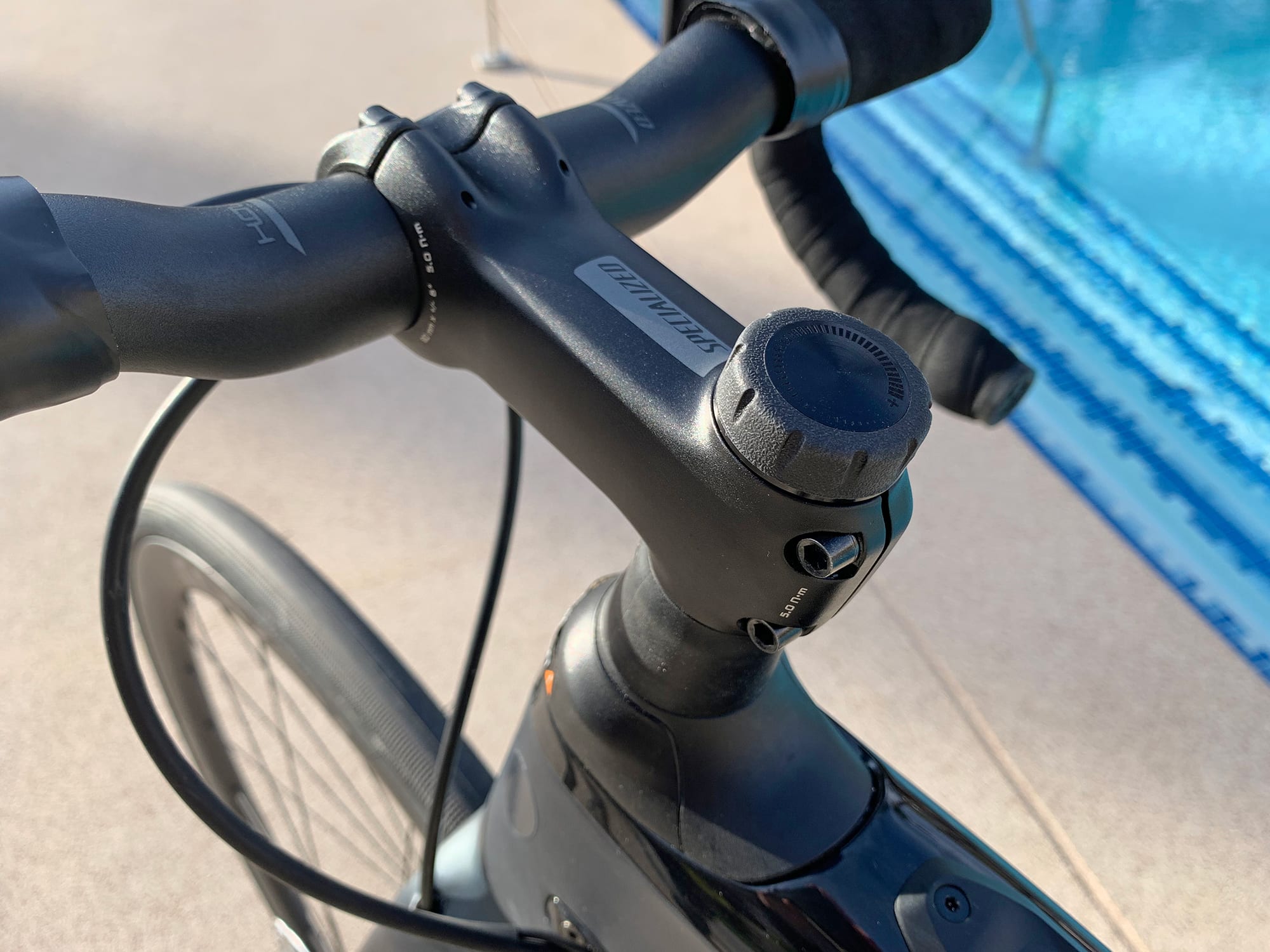

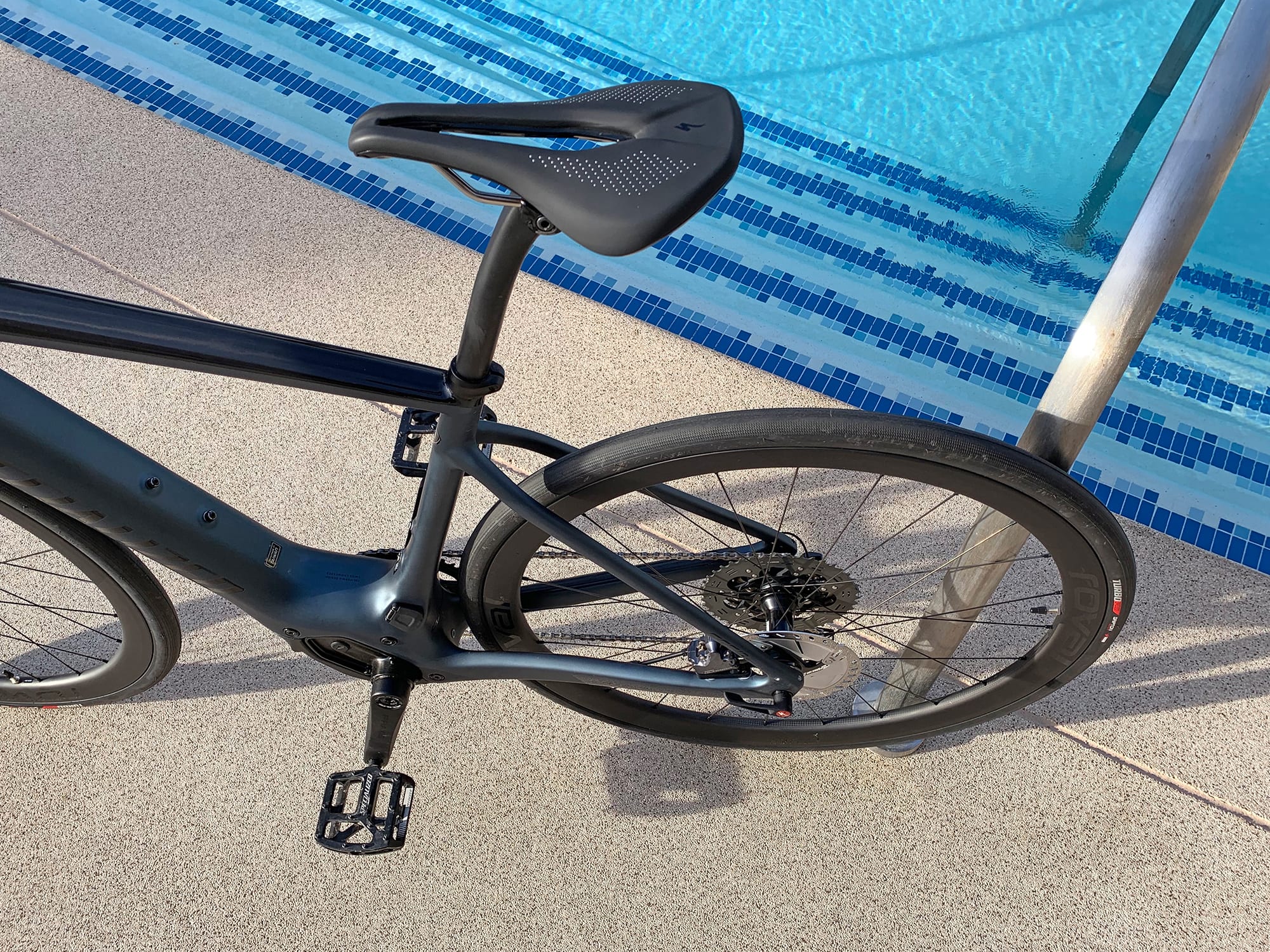
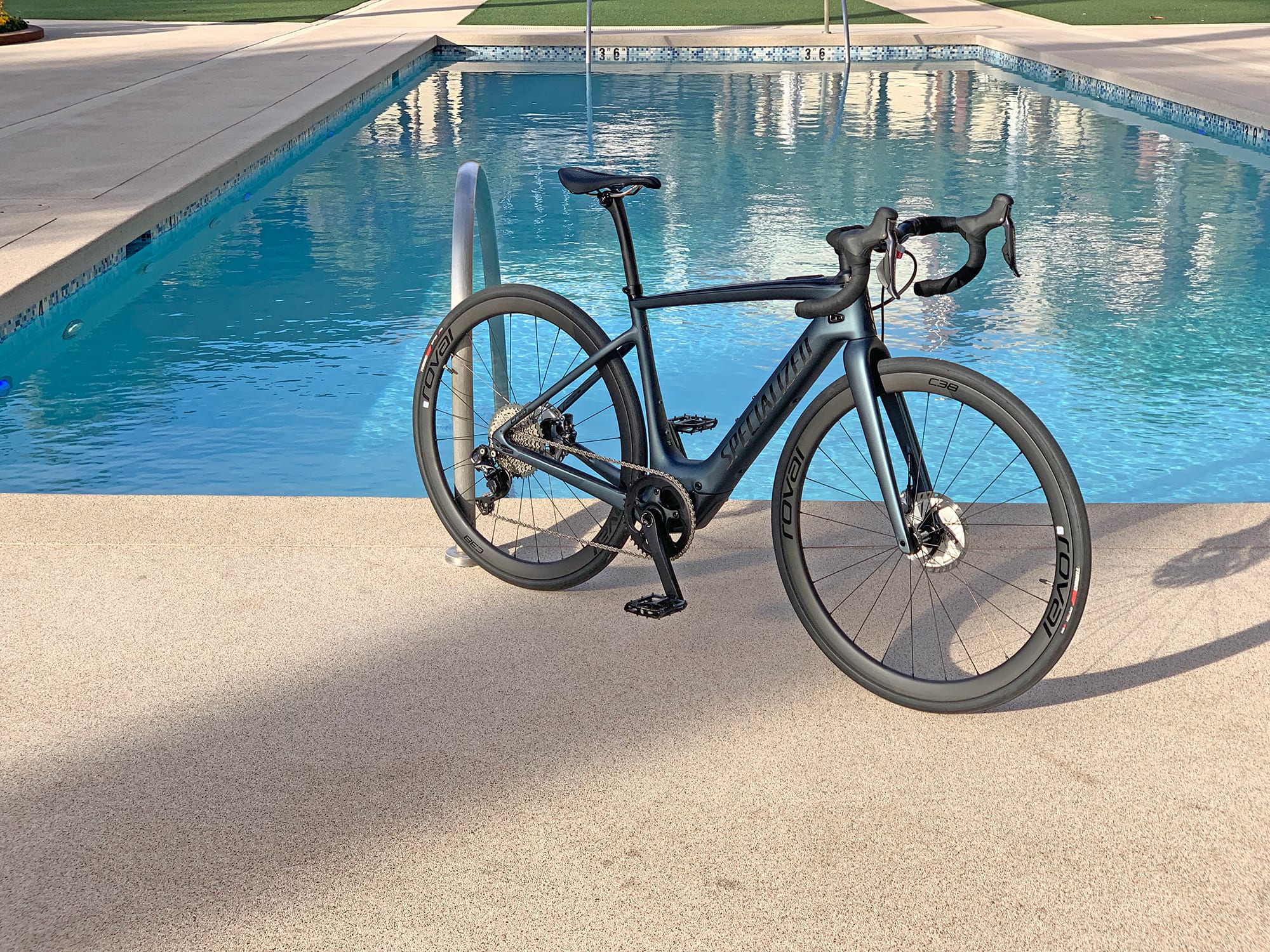
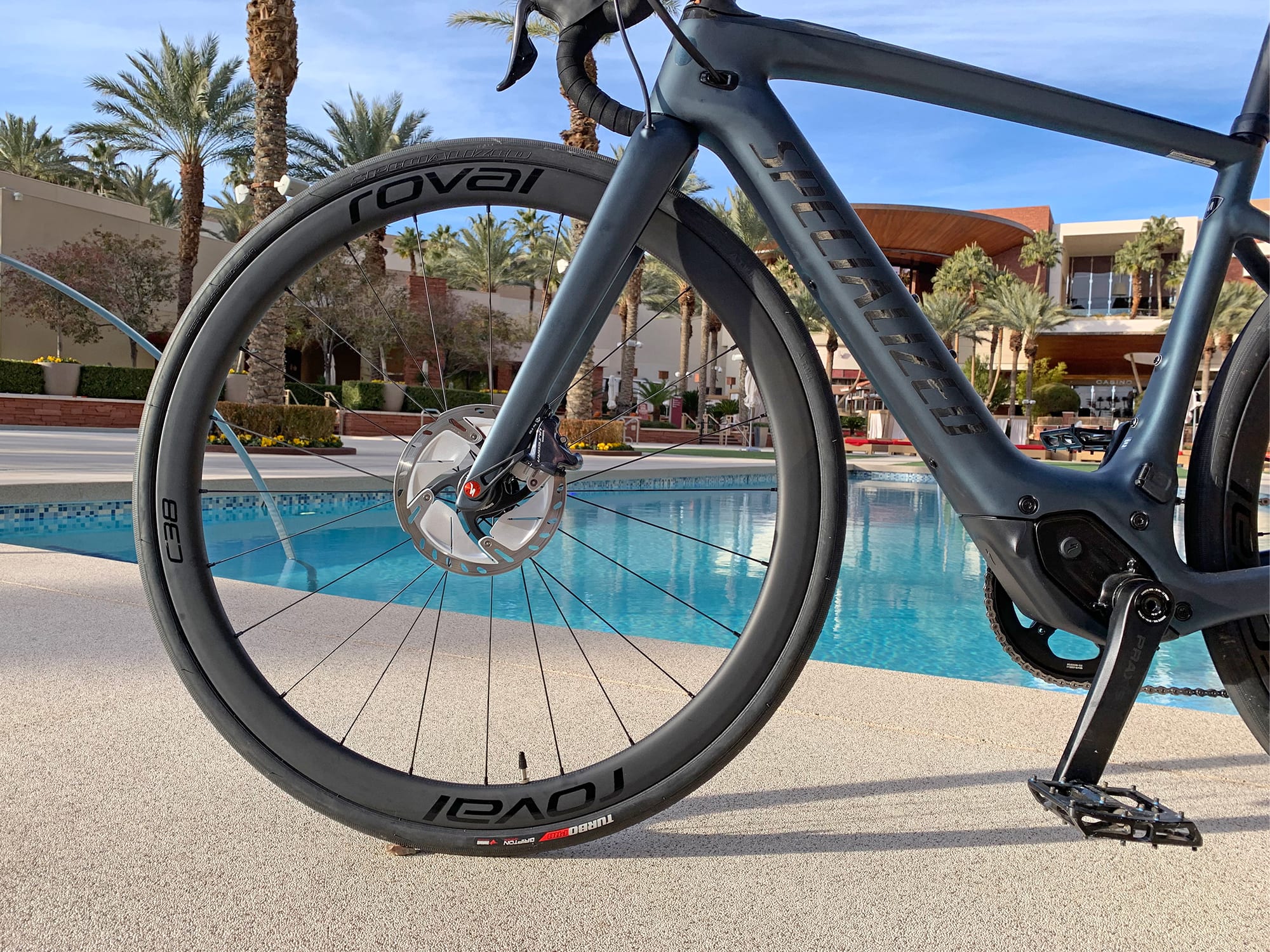

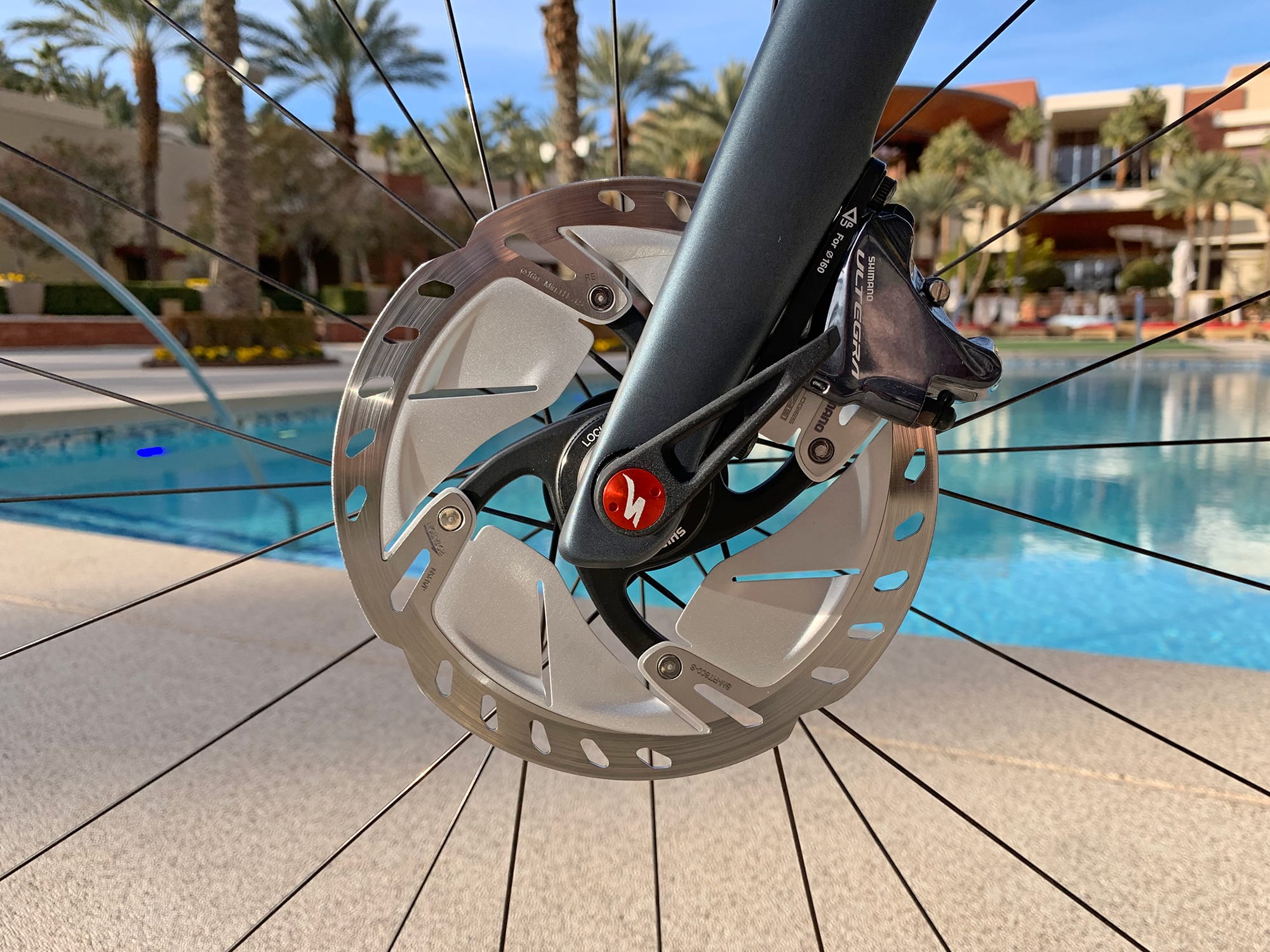
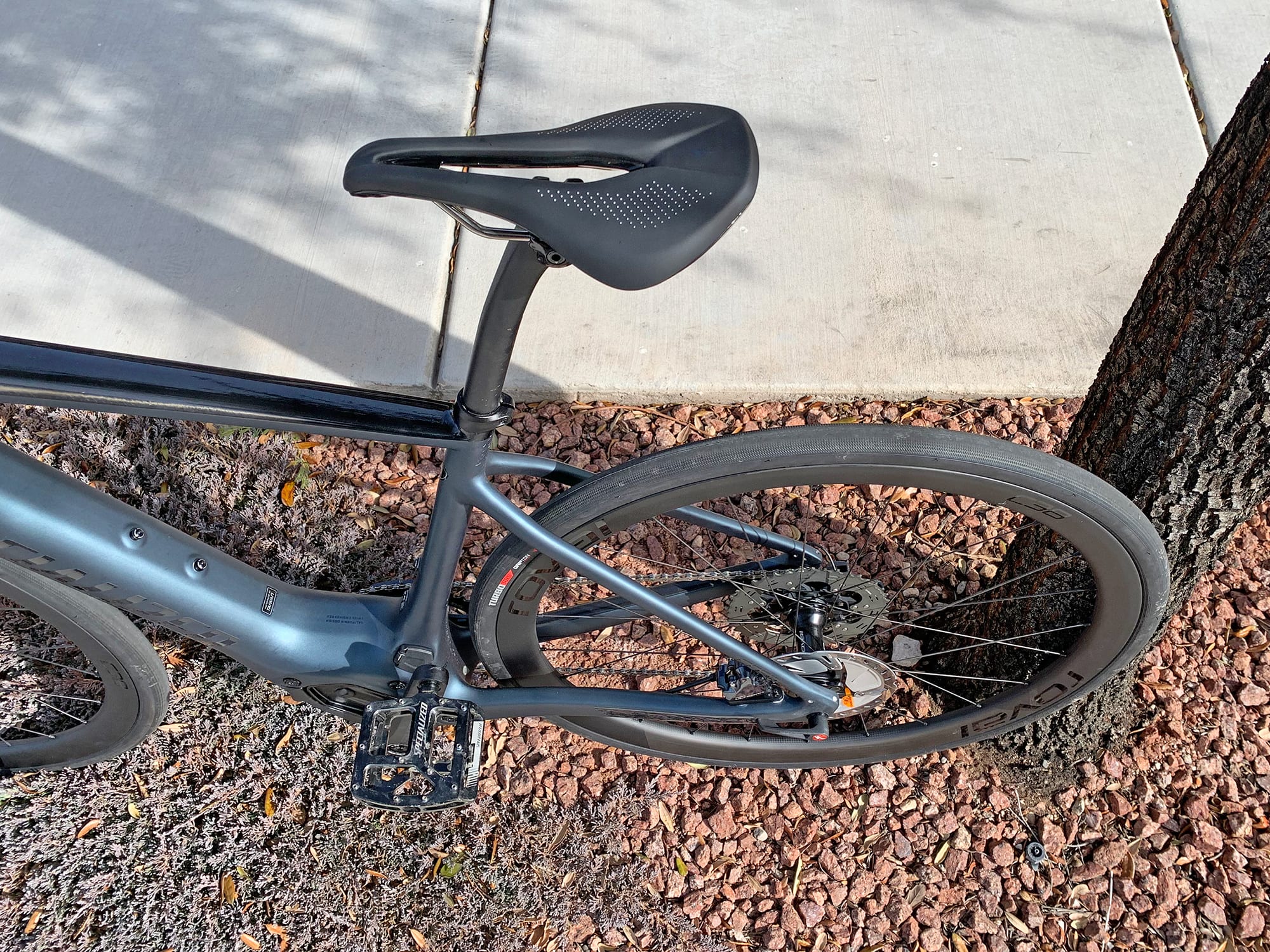
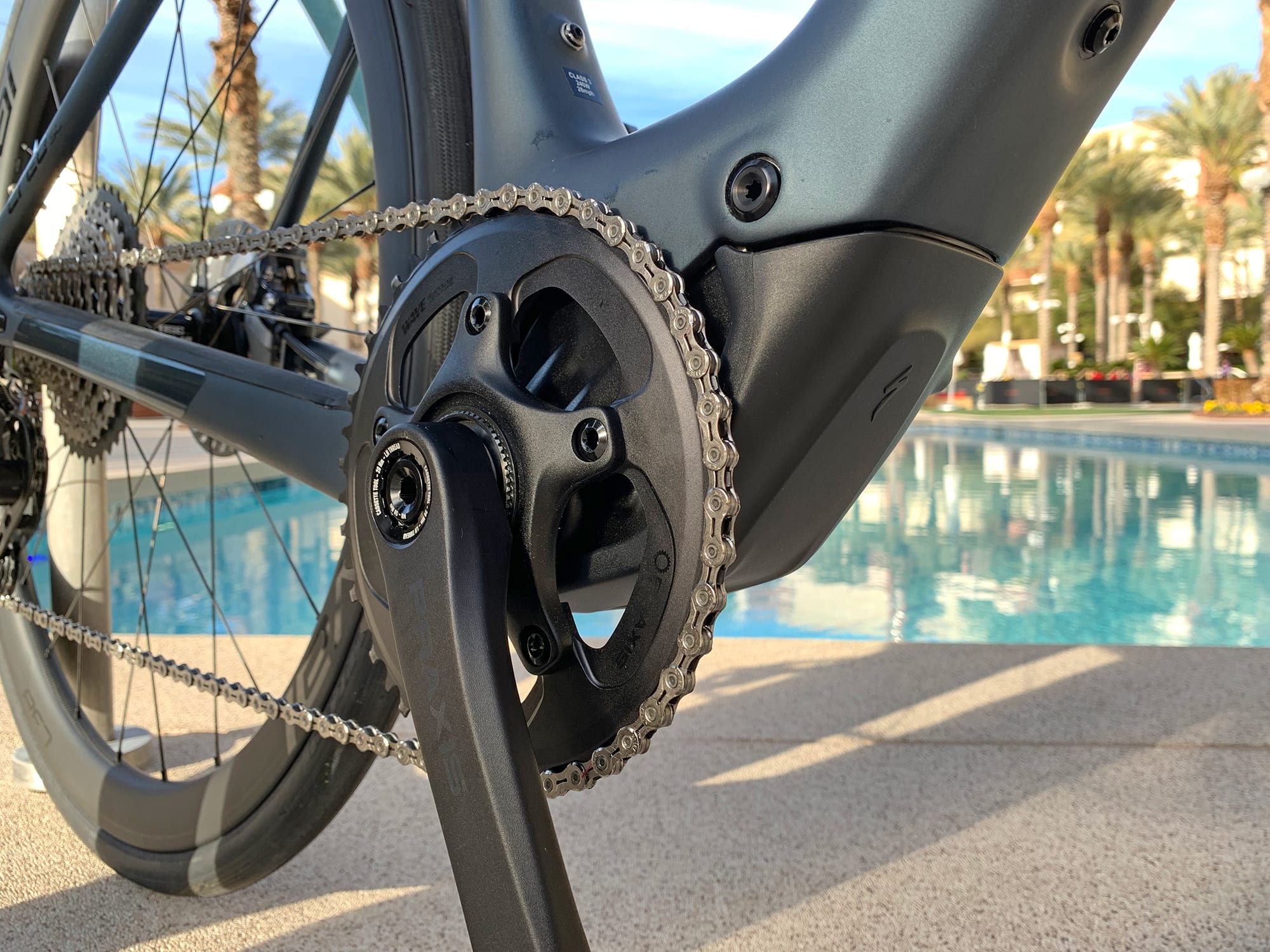
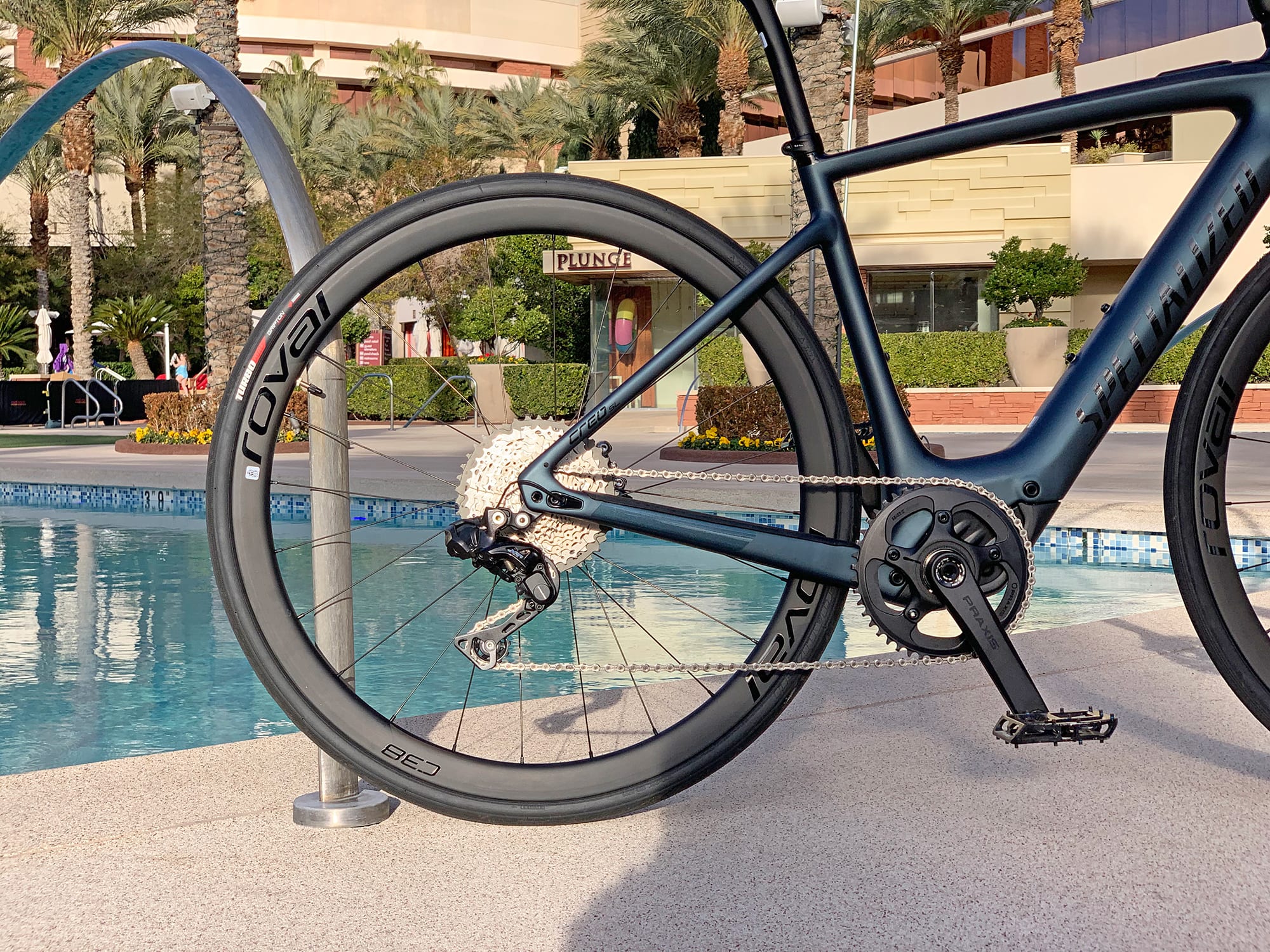
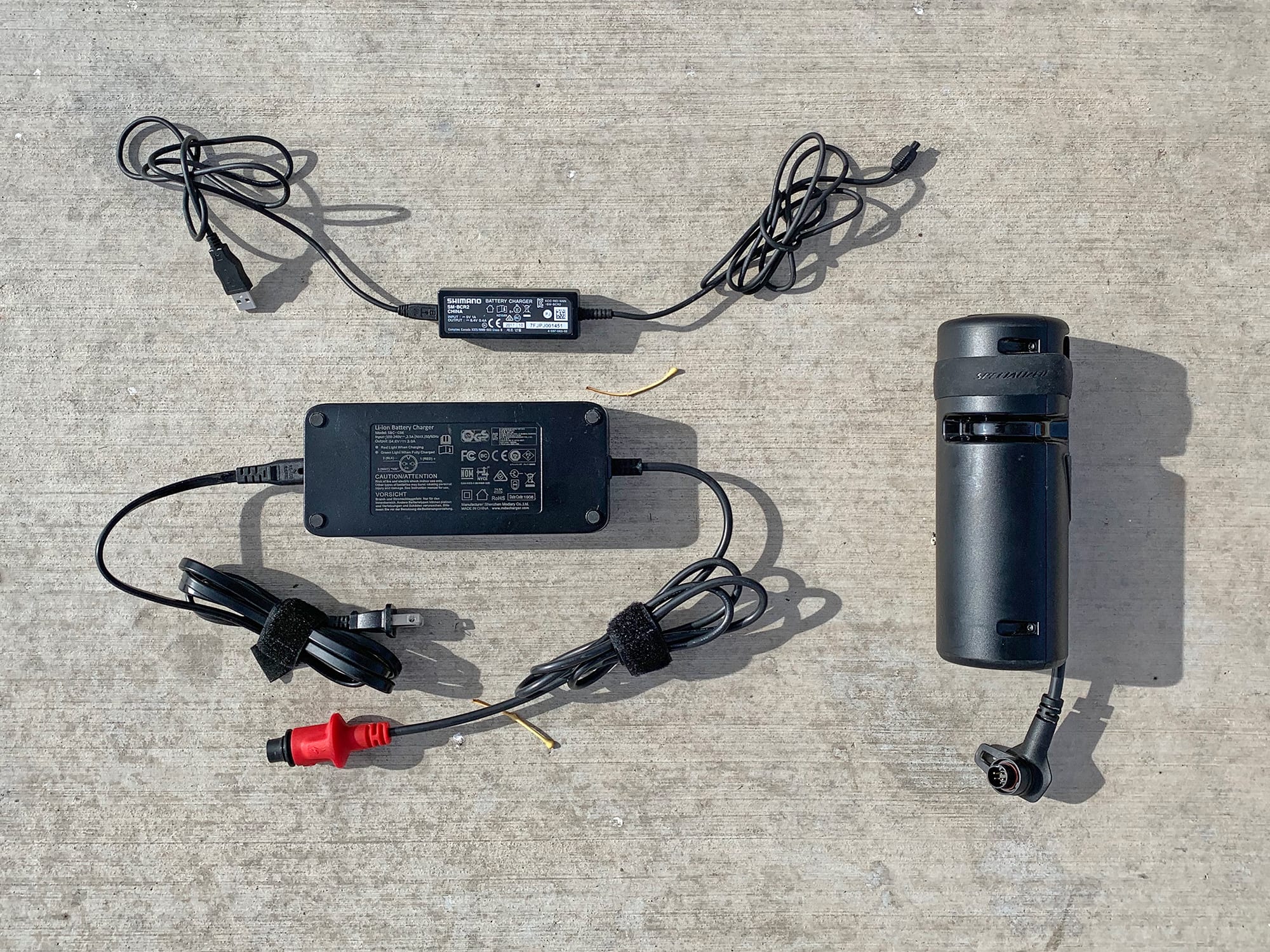
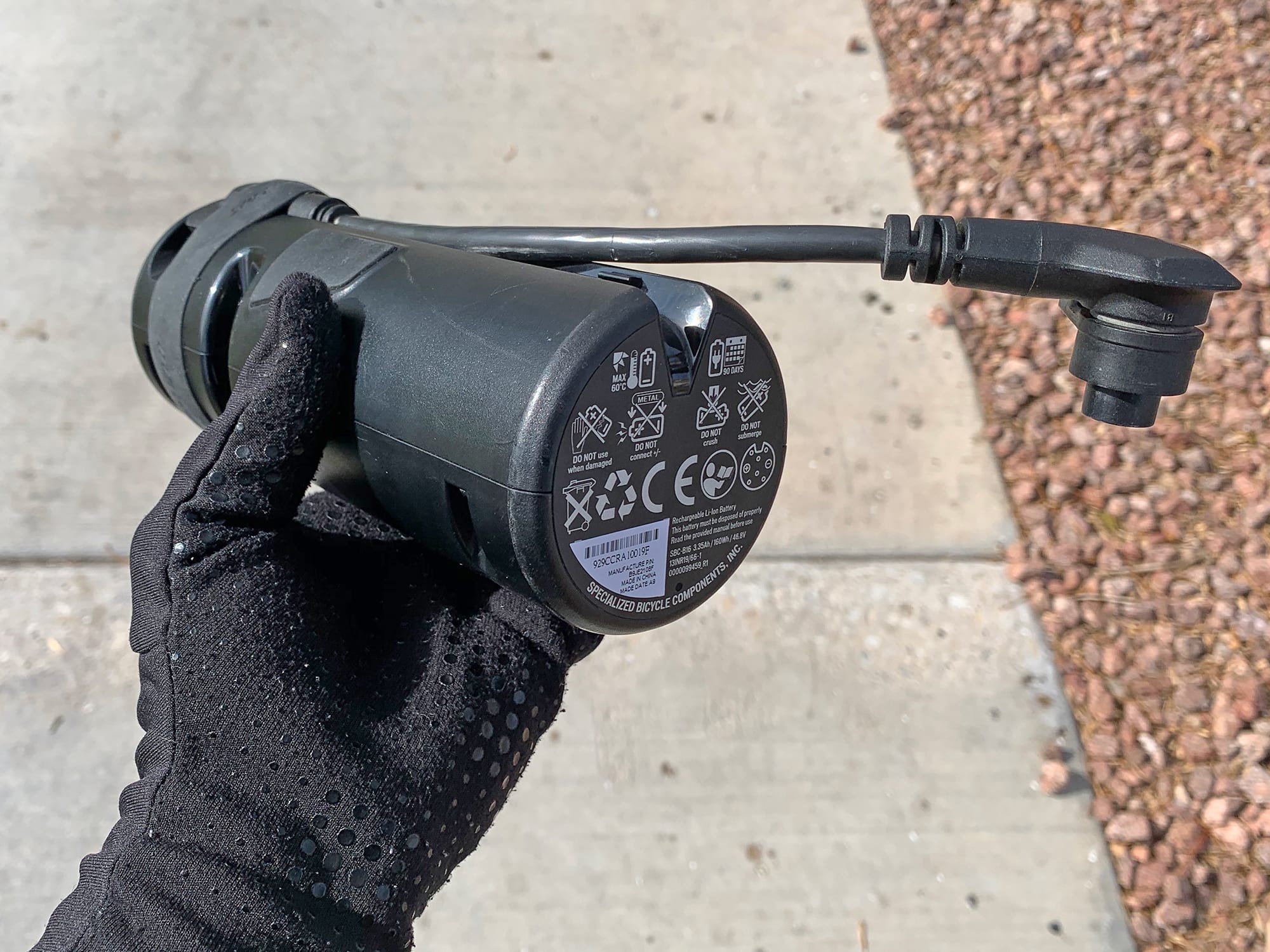

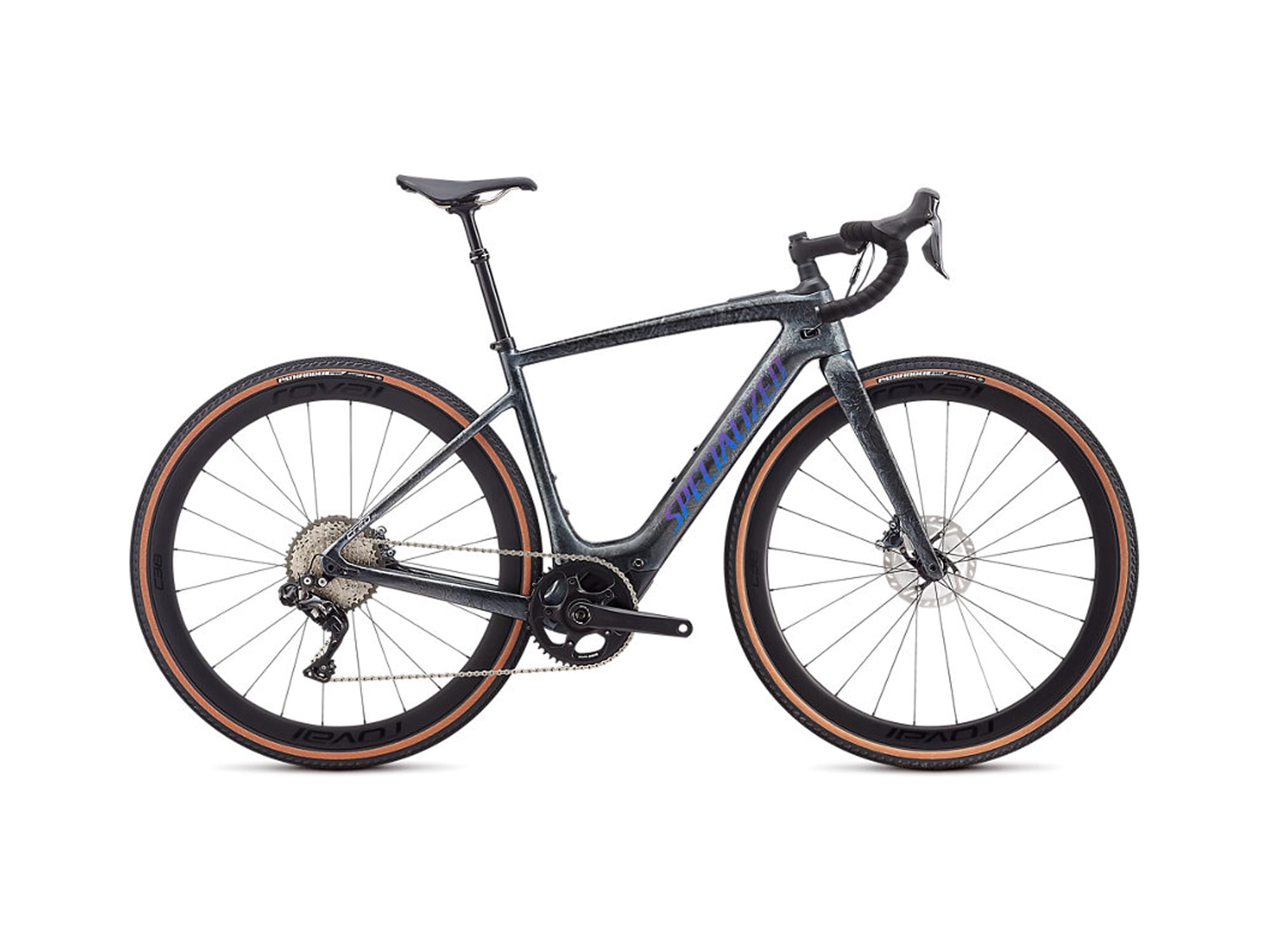

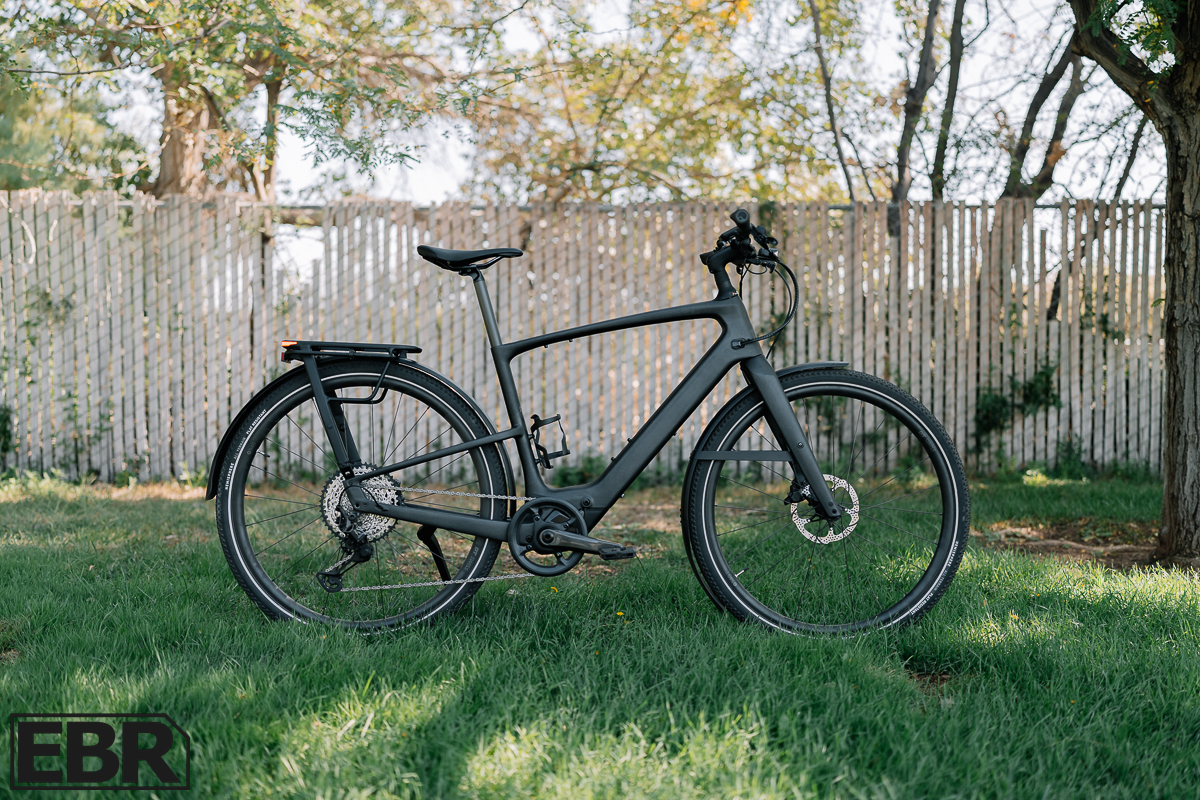
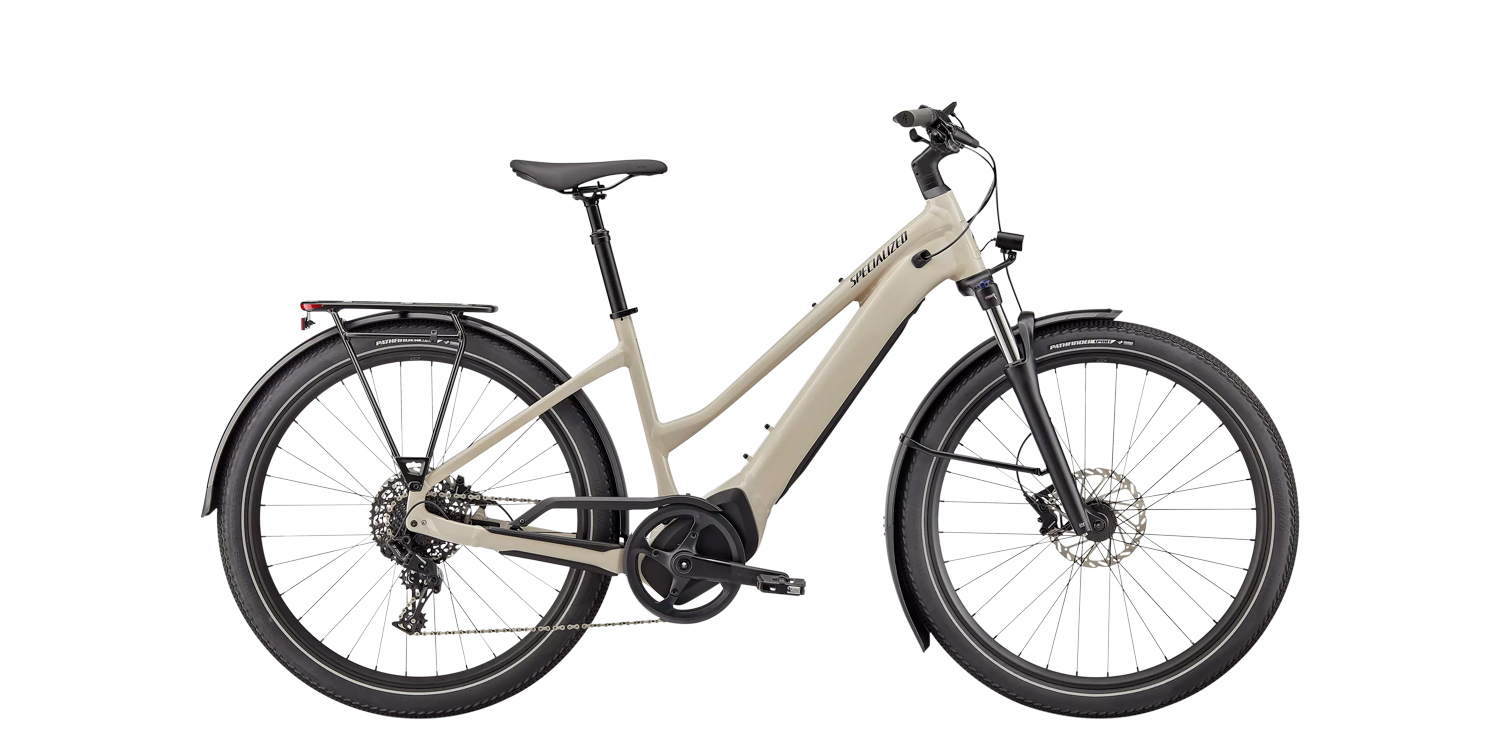
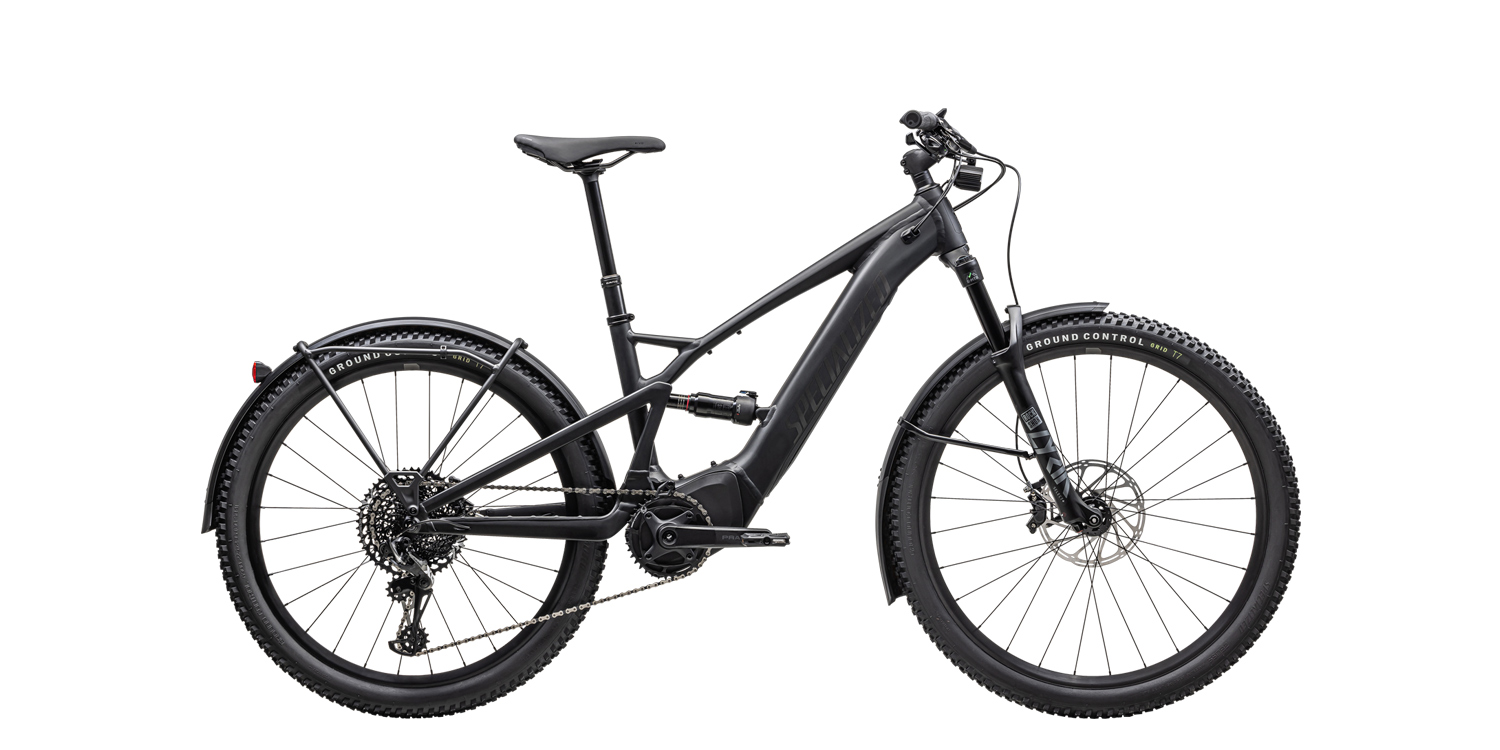
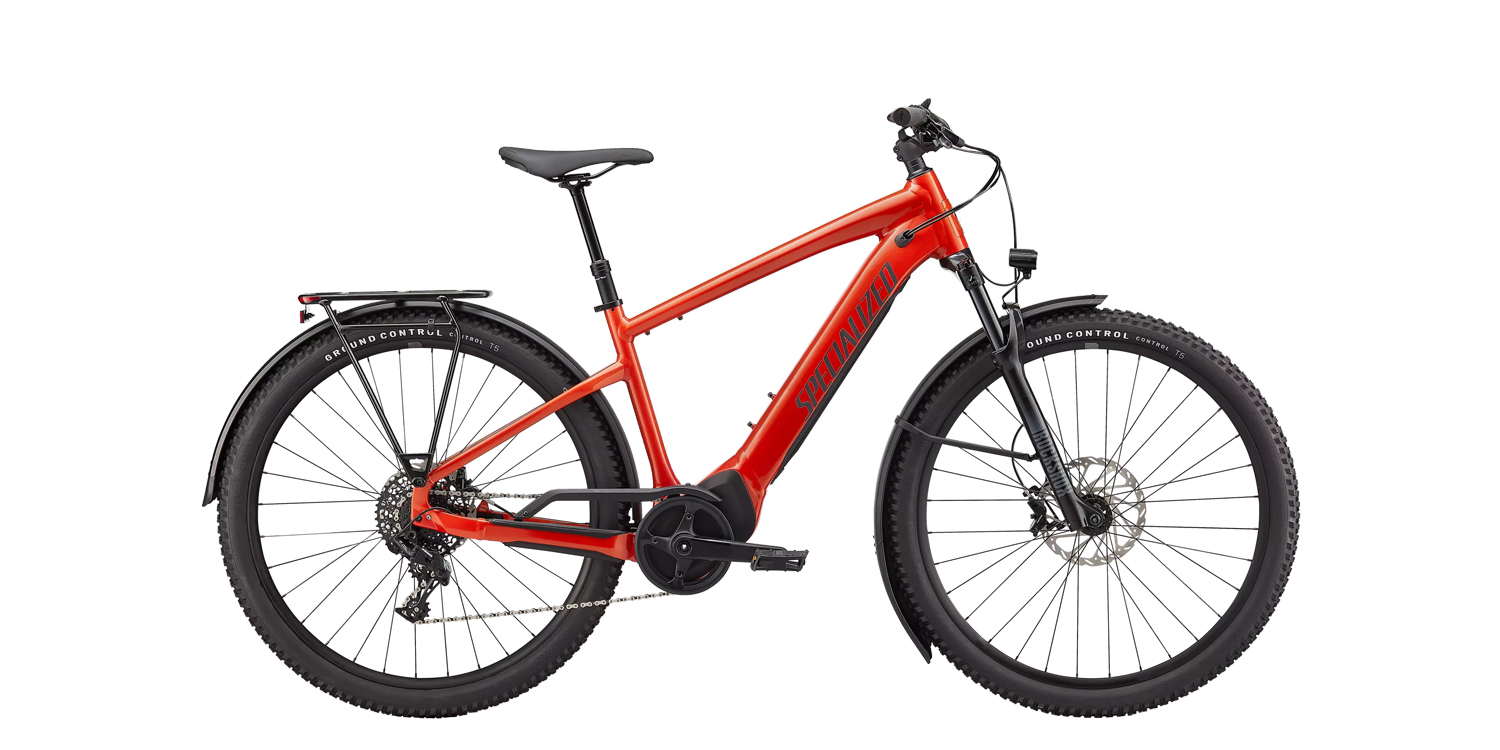
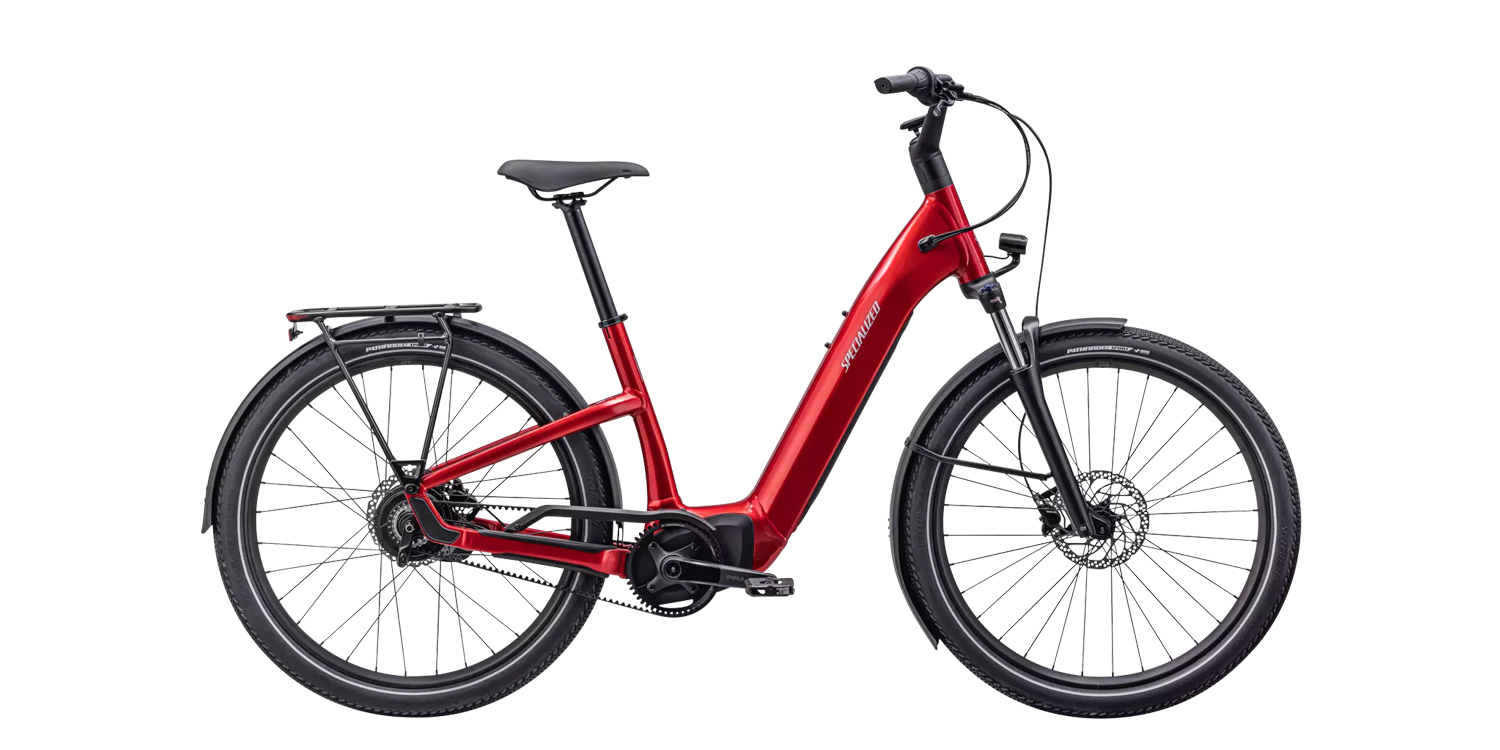
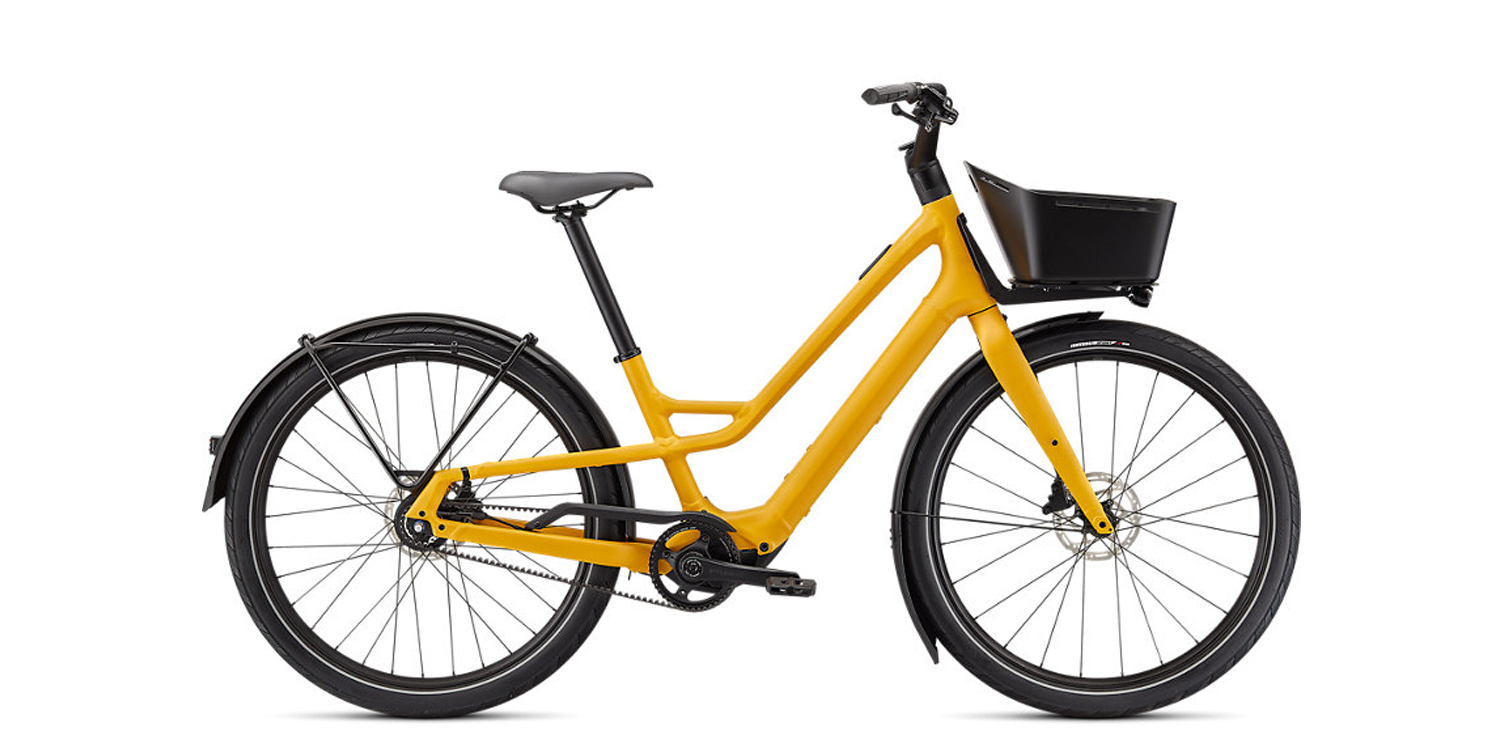
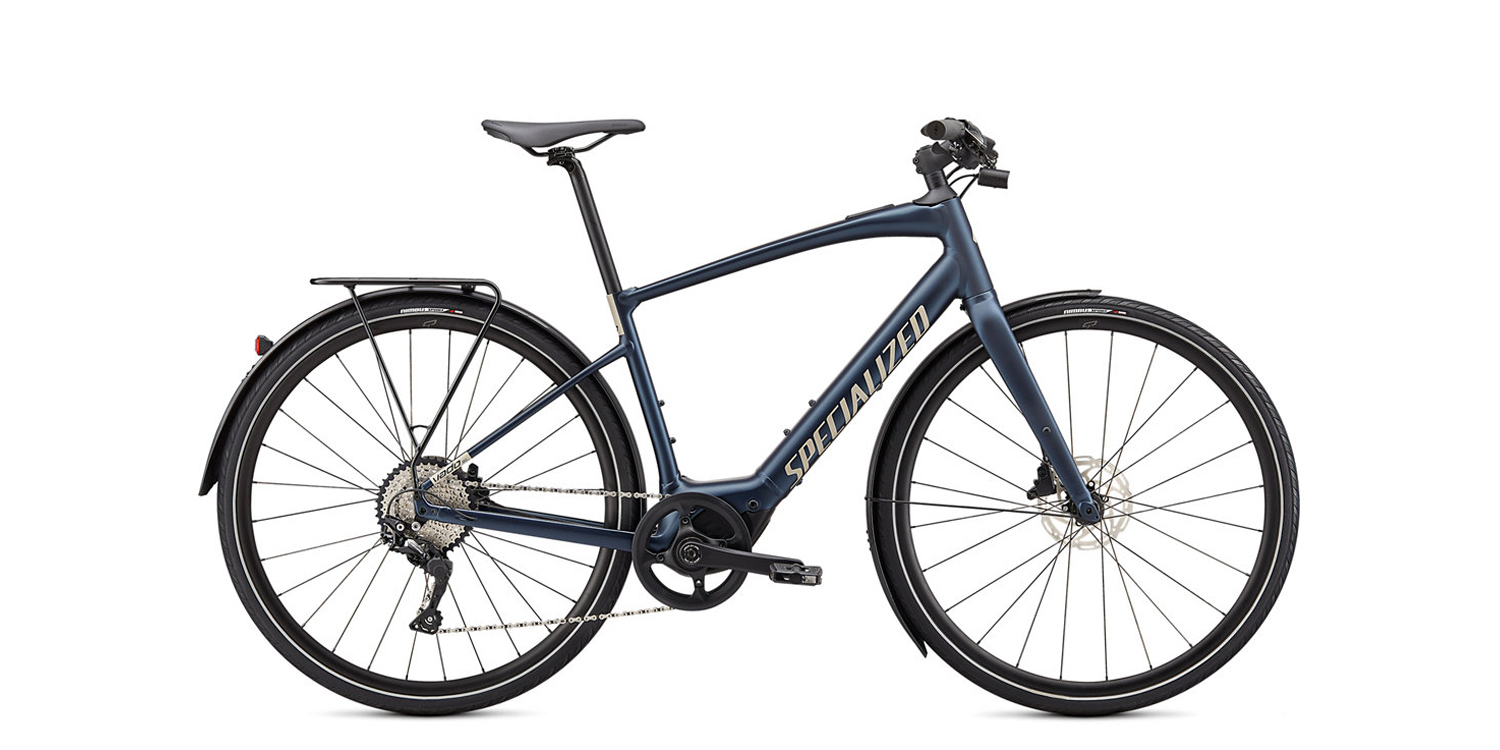
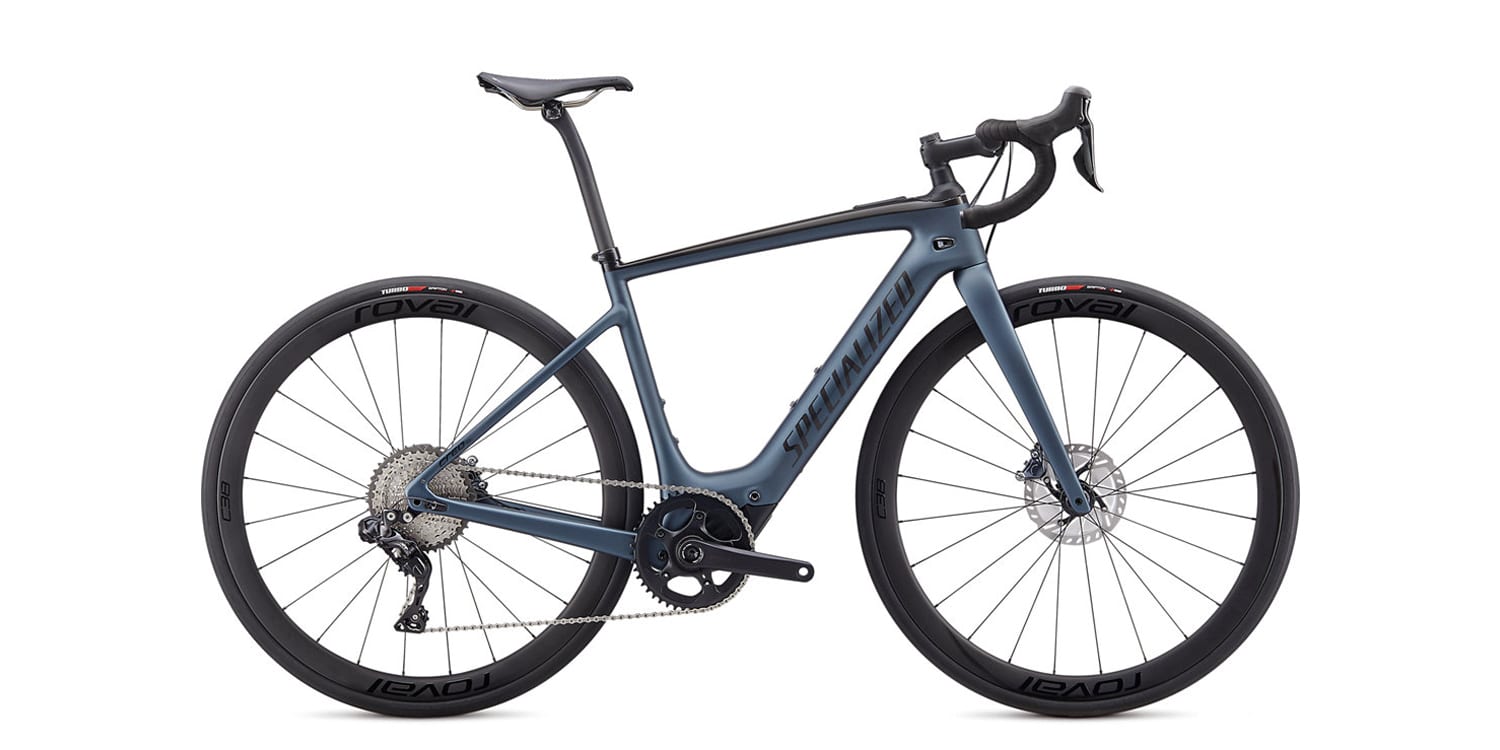
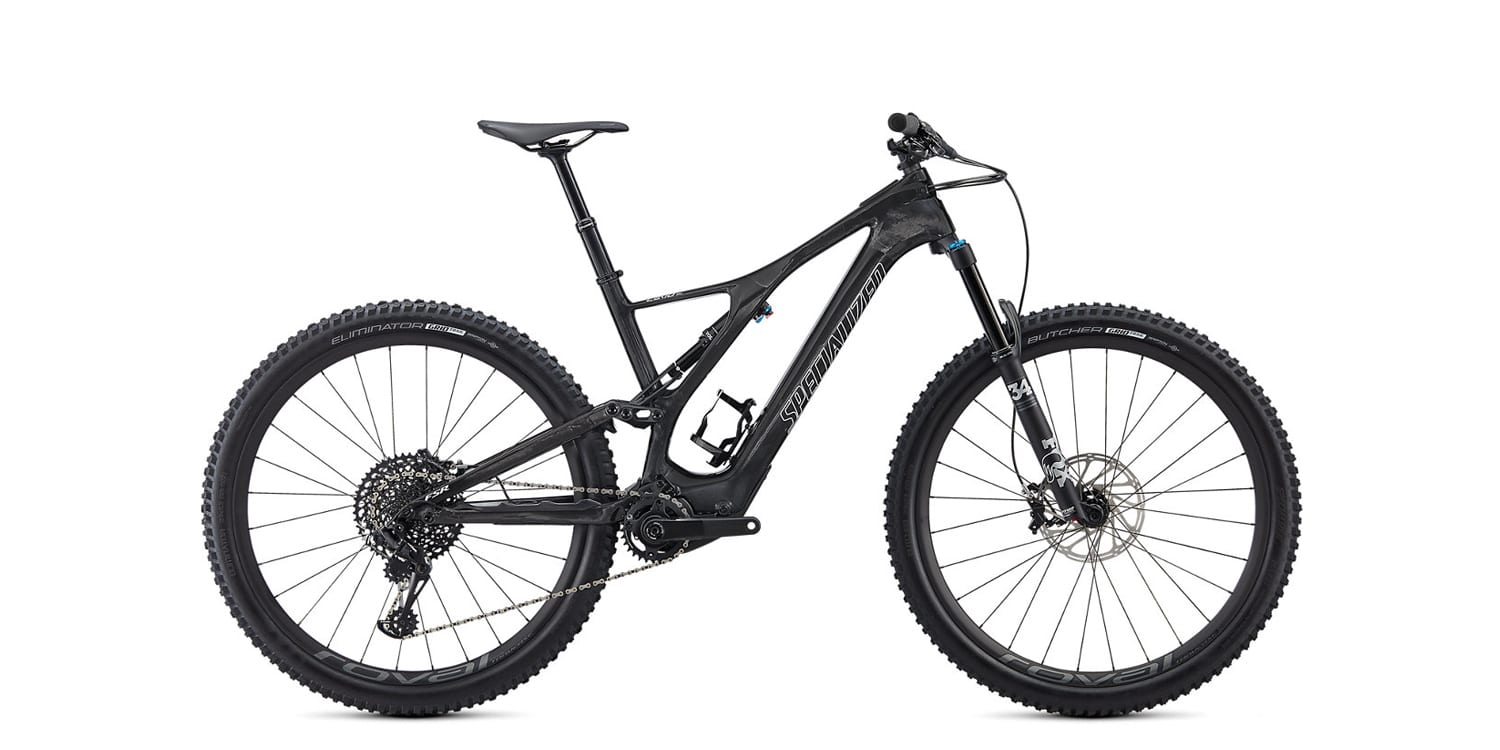
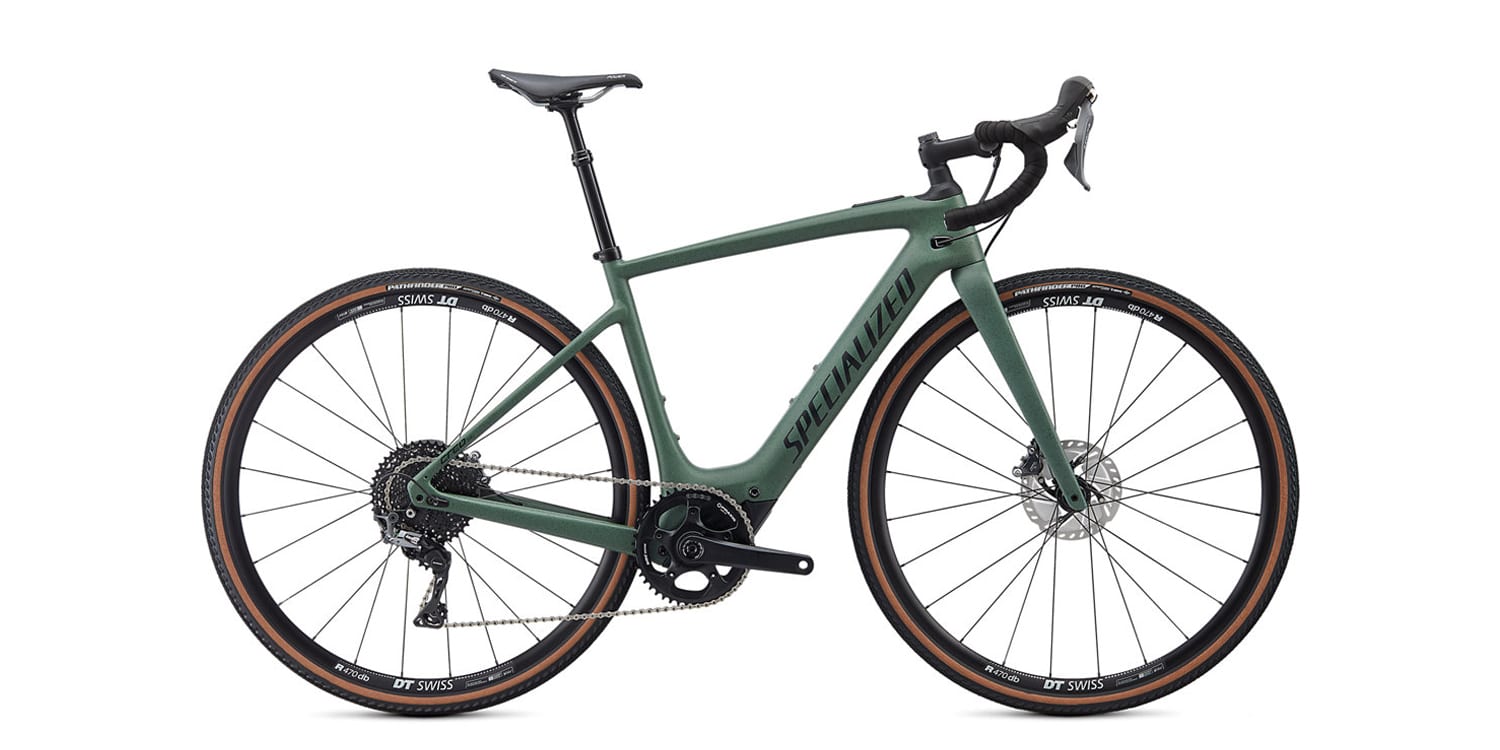
Harvey Miller says
I am very curious about the comment that the Shimano GRX brake levers can be fitted on the Creo with the extensions so that the user can apply the brakes from the top of the handlebar. My wife has order the Crea and was told that this adaptation can not be done “due to the hydraulic brakes”. I suspected that the LBS was incorrect but, in searching for the GRX levers I didn’t see any (so far) with those extended levers. Can anyone furnish a link while being absolutely sure that it would be able to be mounted on the Creo?
Charlie at ElectriCityBikes says
We have fit the GRX sub brake lever on a Creo handlebar already. Note that these are REALLY grabby and there is no modulator to dial that back. If you are local to us in Washington DC we can do this for you, otherwise you can ask your local dealer to order and install. It will require splicing the brake hose and bleeding the system. Let me know if that works!
Court says
Awesome, thanks for the feedback on this Charlie!
Byron Mucke says
Thanks so much for the review of both Creo models Court. Though expensive, it shows how thorough Specialized is in making sure they are creating a fully integrated bike riding experience. For long commuters (20+ miles one way) this is a dream bike. I did not realize that the Creo went to 28 as opposed to the traditional 20. As a traditional road cyclist, I often exceed the 20 mph limit, but to be able to maintain a steady 25 would make my commute more enjoyable. Hopefully we will get a chance to hear your impressions of how this system compares to the eBikemotion system bikes like the Orbea Gain or Fazua bikes.
Court says
Hi Byron! I much prefer it to the Fazua motor. Just got to cover that system on some BULLS models earlier in the year, including the Alpine Hawk EVO here. The SL motor feels more natural, provides more power, goes faster (in this configuration), and produced similar if not less noise. Hope this helps! I’ll keep an eye out for the Orbea Gain ;)
Byron Mucke says
Hi Court. I have read that the Q factor on the Creo is wider than other e-road bikes. Did you feel this was the case when you were riding?
Court says
Great question, Byron! This is one of the only questions I did not get feedback on when reviewing the bike. I’ll reach out to them and ask about Q-Factor… My ride experience overall was great, and I did not feel that it was noticeably wider than other products… but I wasn’t going back to back and was coming off of eMTB models before this demo event, so it’s hard for me to say.
Court says
Hi Bryon, I reached out to Specialized and was told that the Q-Factor for their SL 1.1 motor ebikes is 181mm. I hope this helps! I believe that a standard bicycle Q-Factor is 175mm, so it would appear that this is indeed slightly wider. My own experience with the bike was that it felt pretty comfortable and normal, but I wasn’t using clip-in style shoes and wasn’t riding super far or hard. I hope this helps!
Byron Mucke says
Thank you for the research Court. I saw in a Peloton Facebook post that Trek has the Domane+ HP line using the Bosch motor to reach the 28 mph limit. This is now in addition to their Domane+ LT that uses the Fazua system. The HP line is coming in around 36+ lbs.
Court says
Cool! Thanks for the feedback on this, Byron! I’ll keep an eye out for these other Trek models and post some reviews. In the meantime, I’m guessing that the BULLS road models are very similar in weight and performance, since they use the same drive systems :)
Kenneth Maruska says
There are impressive ebikes but I not sure if they are game changers for getting more new riders on ebikes – they are clearly designed by cyclists for cyclists. I think when riding an ebike it’s better for most riders to be more upright for visibility and comfort, have wider tires for improved comfort and handling, and higher power for making it easier to maintain higher average speeds. I understand the desire for concealing that it’s an ebike when targeting traditional cyclists but I think long term that the best commuting ebikes will go the way of motorcycles and just make the drive systems a design element of the bike (motor and batteries can be an interesting design element of the bike). As examples I like to refer to models from Klever and Vintage.
Court says
Yeah, I’m with you on these views Kenneth… and I think that Riese & Müller is a great example of motorcycle-esque electric bicycles. When you look at the overbuilt sturdy frames, designed with comfort and utility in mind, and how the motor and battery elements are a part of the bike vs. being concealed. As a somewhat sporty rider myself, and a lightweight rider as well, the Specialized Turbo Creo is a real treat… it’s so light and fast and integrated. The ride experience is an athletic sporty one that for me, is an improvement over a non electric road bike simply because it allows me to go further and ascend hills without exhaustion if desired. I think these are two different categories of cycling, even in the analog space… so they do translate into the electric space and still serve each audience well. I’ll keep an eye out for Klever and Vintage so we can post some more reviews later this year :)
Rick says
So how does one get expert Advise from a guy like Charlie, when you live in another state: The Specialized dealer in my area didn’t even know the Como They had on the floor was Class 3. I can drive there and buy a Bike From Charlie, Correct? I just can’t order Online? At least a Specialized I can’t. Is that Correct? Thanks
Court says
Good question, Rick! Charlie is definitely a leader in this industry, and I suppose you could just call him? Check out the ElectriCity Ebikes website and reach out. I bet he’d spend some time answering questions, even if you did end up buying locally. I can’t speak for these guys, but most folks that I meet in the industry are friendly and just want to see people enjoy cycling and find a good product fit ;)
David says
Thanks for reviewing the Expert and the Comp! I just devoured the written and filmed reviews and wanted to ask about your thoughts on choosing one over the other– I saw in the Expert video that Charlie mentioned (towards the end) that he preferred the Expert non-Evo over the Comp Evo. I’m debating between the two Comp flavors right now, having ridden the Comp Evo (what a bike!), as well as debating waiting a bit longer to figure out how to make an Expert happen. Could you speak to the differences between? Other than DI2 and tire choice, is there really that much of a noticeable difference between the Experts / Comps and gravel/road? I don’t anticipate using the dropper, but do like chunky tires, so am quite torn. Thanks!
Court says
Hi David! I come from a mountain biking background (with a bit of road). These days, as I’ve gotten older, I prefer the comfort of wider tires and love to adventure with my bikes… so having some tread and off-road capability is great. There’s something really special about how efficient the narrow hard tires of the standard road models feels… like a race car. However, with the electric assist, you might be riding further and faster on average, so comfort could be worth the trade-off. I think I’d either get two ebikes and fully optimize for road efficiency, or if this is your single electric bike, then maybe it’s best to get a slightly more comfortable “all around” EVO model, and put the extra money into the Expert level. The electronic shifting is done really well and is the biggest upgrade. For me, color and style also play a role, so if there’s one that calls out (Comp or Expert) then take that into consideration. All of the Creo models that I tested were awesome and I’d be happy with any of them :)
Ruben Ordinario says
Hi, I wish Specialized would be able to put a control switch on the handle bar to change between the modes from ECO to TURBO rather than reaching out on the top tube. It think its more easier control for the rider.
Court says
I agree… and they have chosen to do so on the flat-bar Turbo Vado SL which also comes with fenders and a rear rack, slightly wider tires, and integrated lights. If you are okay skipping to lighter and more sporty Creo, with it’s cool drop bars, then consider the Vado SL for sure ;)
Ruben says
I already had the CREO SL Expert, and finding it absurd to hang onto the handle bar every time you switch to another mode. My 2019 Turbo LEVO has control in the handle bar, why Specialized did not use same in CREO.
Court says
Hi Ruben, I’ve noticed that due to the grip tape and width of many drop bars near the stem, lots of ebike companies forego button pads on their road bikes. Some that use Bosch have kept the button pad… but positioned it on top of the stem like this, so you still need to take your hand off of the grip to press. Since there are three hand positions, I think companies just struggle to figure out the best place and then I guess Specialized decided to drop it entirely for the current generation of Creo models. Thanks for your feedback! Maybe they will see it here and consider alternatives in the future. Do you like the bike otherwise?
Martin K says
Hi. I’m the happy owner of a “Turbo Creo SL Comp Carbon EVO” and am considering to upgrade it with Di2 GRX gear shifting (basically same as what the “Turbo Creo SL Expert EVO” is born with). Do you know where Specialized placed the Di2 battery on the “Turbo Creo SL Expert EVO”?
With the EVOs drop post system it can’t be in the seat post, but maybe in the bottom of the seat tube just above the crank/e-motor?
Thanks for any hint you may be able to give me.
Cheers,
Martin
Court says
Hi Martin! Sorry for the slow reply. I’m not 100% sure on this, but I believe they put the battery in the handlebar and there’s a button at the end of the drop section… I’m only working from memory here, but look at the end of the right handlebar for a plastic cap with some buttons. Please let me know if this is correct!!
Martin says
Hi Court. Thanks kindly for your follow-up. Having looked at Di2 parts, videos etc. I’m fairly sure that that the battery won’t fit in the handlebar, but you are right that there is a Di2 charging port/control unit to be fitted in one side of the handlebar-end.
The more I look at details etc. I think the battery must be fitted above the crank in the seat-tube, where the seat-tube is wide enough to allow the dropper-post wire to pass by the battery. But of course that may interfere with the main battery charging port.
Will let you know if I figure out the details.
Court says
Interesting… yes, I’d love to hear what you discover! Good luck with the project, thanks again Martin :)
Martin K says
Hi Court. Since you asked, I never found out how Specialized have installed Di2 on their version with dropper-post. However I’ve successfully installed Di2 with the battery (wrapped in enough bubble-plastic to keep it in place) plus a Bluetooth antenna (no signal loss through carbon frame) and Di2 4-way junction box in the horizontal top tube. Installation done through the opening for the ebike control unit in the top tube. I used a 160 cm Di2 cable to connect the rear-mech to the 4-way junction box.
Di2 charging port/control unit is installed in one side/end of the handlebar. This YouTube video on Di2 (stealth) installation (and the follow up) were very useful, but according to my tests, the BT antenna will not work from inside alloy handlebars as is otherwise shown in the video.
Court says
Very interesting about Bluetooth going through the carbon frame, thanks Martin! I linked the video and am watching it now myself. Cool setup you’ve achieved ;)
Jim says
I’m a 71 yr old cyclist who have raced (cat 3) and ridden for 40 years. My racing career ended 3 years ago because I just couldn’t stay up with the younger riders. Group riding has always been my passion – whether racing or training- so when I became aware of the Specialized e-race bike – I was very interested. I purchased my bike ln October of 2019 – and – have never been happier. It’s like I’m 40 yrs old! Riding with the “hardcores” at 20 mph is easy and enjoyable. Just staying in the group is so much fun. I strongly encourage older racers to consider buying this E- bike. Jim B
Court says
Wonderful! I loved reading your comment (as an almost 40 year old myself). Ebike technology is so fun, and such a great way to connect with others from all levels. Ride on, Jim!! Thanks again for brightening my day with your post :D
R R K says
Court, thanks a lot for your reviews, I’ve found them so informative since I got into e-biking 5 years ago. I’m the proud owner of a Turbo Creo SL Expert (mouthful). It’s absolutely the best bike I’ve ever ridden and your review nailed every feature and answered all my questions before I bought it. I only wish my LBS was a lot more informed on these bikes. This is a pretty high end bike, and especially when you’re talking about things like Di2 and range extenders, it doesn’t seem like my LBS had any idea (your review answered my Qs).
One thing I should mention is that I wanted the EVO, but ended up with the non-EVO (stock is really low this time), but since the geometry is identical, I put the 700x38s on the non EVO and love it. I don’t really miss the dropper post at all.
Thanks for all the work you do!
Court says
Hey! This is the kind of comment I love to read, thanks R R K. I do my best to list the details, share my insights, and then keep the space open for feedback and improvements. I think you got one of the best (if not the best) electric road bikes on the market today. Love the SL system… Thanks again :D
Marcus says
RRK, I have the Turbo Creo Comp Carbon version with the 28mm road tires. I originally test rode the Comp Carbon EVO version and loved how smooth the ride was on the 700 x 38 were!!! I will be putting 700 x 38 Pathfinders on my Turbo Creo Comp Carbon as soon as the tires come in my LBS!! They are as of this writing on back order and will come in in early May. I also will be adding the Creo Road Remote to my bike so I can switch the levels of assist from the handlebar instead of taking my hand off the bar at all. It is my sincere hope that I will get all of the enjoyment out of the capabilities this bike offers that were only a dream for years. Enjoy your Turbo Creo!!
NREsq says
Can you provide a link or other info on the Creo Road Remote referred to, plz? Not able to find that by internet search for some reason. Thanks!
Court says
Marcus was trying to reply to you, he posted this: Here’s a video for the Creo SL Turbo Remote and a website listing for it at Mike’s Bikes.
Court says
Here’s a video for the Creo SL Turbo Remote: https://m.youtube.com/watch?v=4fcrIRMO_Cg and a website listing for it at Mike’s Bikes https://mikesbikes.com/products/turbo-road-remote that Marcus was trying to share with you. Hope it helps!!
Marcus says
Here’s a video for the Creo SL Turbo Remote and a I saw a website listing for it at Mike’s Bikes, but that may be expired now.
Court says
Thanks Marcus!
Marcus says
You’re so welcome. Let me know how it works out.
Will Sbarra says
My Creo makes a clicking noise while pedaling. This occurs with light or heavy pressure on the pedals or stress on the motor. The clicking comes and goes. A friend with a Giant ebike had a clicking noise and it turned out to be a loose motor mount. My local Specialized dealer checked that out and the clicking still happens. I know another Creo owner with the same issue. I hesitate to call it a ‘problem’ as it is more of a ‘nuisance’ than anything else. Thoughts?
Court says
Interesting, thanks for the feedback Will. Does the creaking have to do with ambient temperature? Could be that there’s more clearance when the motor is cold vs. hot or something? I’m just guessing, I have heard creak on traditional bicycle bottom brackets when riding at times, especially after broken in and if the bike got really wet.
Will says
This is my 2nd Creo. The 1st was the SL aluminum model and this is the ‘expert’ level. I don’t recall hearing clicking on the SL. A friend has an SL and also has the clicking issue. I bought this bike the day before he and I left for a cycling tour in Carbondale CO. Late September. The weather was cool/cold in the mornings but 75/80 in the afternoons. Since then I’ve ridden hills, flats… not much in the way of rollers in the Sacramento CA area. I haven’t been able to associate the clicking with the weather. I was wondering if it has something to do pedal rpms vs internal gear rpms? Or, something else internal in the motor. Like spinning faster than the motor is spinning? The local Specialized shop does not know either.
Court, I’ve seen your name quite often on this forum. It seems you know quite a bit more than I do about ebikes. I get that ‘Q factor’ is related to crank lengths But I have no idea how? Could you explain? Also, I saw that you reviewed Bulls bikes a while back. Another friend have his and hers Bulls bikes, a townie version with fenders, front/rear lights, etc. About 45 lbs. He told me that have have the same clicking noise that I have. He thought Bulls and Specialized were using the same motor by Bosch. Perhaps, you know? We rode together on Saturday and he could hear it. It also seems to me that the clicking is coming from the drive side of the motor/bottom bracket area.
Whatever enlightenment you can share would be great. The Creo line is great except for this one ‘annoyance’.
Court says
Hi Will! Yeah, I’ll share a little background and some insights that might help with your motor clicking questions. I started ElectricBikeReview.com in 2012 and have done 90% of the videos, photos, writeups, and I’m in the forums often too… since I created them. I travel a lot, am constantly filming, and just trying to keep this place in good shape and answering questions whenever I can.
Okay, Q-Factor is the measurement between the crank arms. It’s like how wide the arms are apart. Some motors (Bosch) tend to force a wider Q-Factor while others are more “normal” or narrow like regular bicycles have. Fat bikes tend to have wide Q-Factor whether they are electric or not, because the tires are wide and the driveline (the chain going from the chainring back to the cassette) has to be pushed out to make room for the wide tires. If you have a specific question around this, I’ll try to answer, but here’s a short guide I made about the topic a while back in the forums that might help. It includes a picture :)
Okay, so some Specialized turbo models use the Brose motor, which BULLS sometimes uses too. BULLS is unique because they use Bosch, Brose, and SR Suntour motors. Brose tends to be small, light, and quiet since they have a belt drive inside. The downside is that I’ve heard some questions come up about reliability. Bosch has several generations of mid-drives and have a good reputation for reliability and support… but their motors tend to be a little wider, heavier, and louder. The latest generation of Bosch resolves weight, size, and even noise to some extent. The Specialized SL models (Super Light) use a custom motor that Specialized designed with MAHLE… and I think that’s almost a secret, but I post it in my reviews here after digging into things a bit. Specialized always wants to appear like their hardware is totally unique and custom. Even when they use Brose motors, they call it their Specialized Turbo motor and reluctantly acknowledge that it’s a “highly customized” Brose. I chalk this up to marketing and premium pricing, but I do think that Specialized is one of the best and definitely the coolest and most cutting edge in the space. I LOVE their SL motor.
Still no idea where the clicking is coming from or what it might be caused by. Perhaps a bearing inside or some sand or just creaking based on the tightness of the interface or spindle inside? These things are VERY complex, with lots of moving parts. Here’s a video showing what’s inside the Brose motor (again, not the same as your SL motor, but possibly what your friend has on his BULLS, this or a Bosch motor). Sorry I cannot provide more feedback without being there in person or taking it apart. Perhaps you could record a video with closeups and multiple angles, put it on YouTube, and share the link here and in the Specialized forums :)
Will Sbarra says
Thanks Court! Now I understand Q factor. I’ve seen a few posts where the motor has been replaced (under warranty) and that cured the clicking noise while pedaling. For those new to my situation, I have a 2 month old Creo Expert with 625 miles ridden. The bike makes a clicking noise with each revolution of the pedals. This occurs intermittently at various speeds, pressure on the pedals, temperatures, etc. The clicking does not affect the performance of the the bike but, it’s really annoying!
My assist level in Eco mode is 25/35, Sport 60/60, Turbo 100/100. I strive to use as little assist as possible and the majority of miles have been in Eco mode. A trip to Colorado with 6 riding days (233 miles) I used level 2 quite a bit. I live in the flatlands and it’s 30 miles before I can ride a hill other than a highway overpass. I will look into the warranty/labor claim others have mentioned.
Will Sbarra says
I took my Creo out for a spin last night with the motor ‘off’ … no electric assist. There was no clicking noise while pedaling which leads me to believe that the issue is with the motor itself. I will contact my local Specialized shop and also the shop where I purchased the bike, about an hour drive. Will see if I can get the motor repaired/replaced under warranty.
Should I contact Specialized as well? If so, does anyone know how to contact them? Any help is greatly appreciated!
Court says
Hi Will! I wish you luck, and think the approach of working through your shops is best. I no longer have a contact within Specialized, just a marketing person who shares updates and helps to arrange reviews when new products are being released. My own best source of help is often the local dealers here in Vancouver, BC. If you’re in the area, I can try to introduce you to them :)
Will says
This is about the Specialized Creo ‘clicking’ issue… maybe some good news! I rode on Tuesday and it was mostly click-free. When the clicking started I stopped pedaling for just a split second, maybe two, then started again… no clicking for the rest of the ride, maybe 10 more miles. I told my friend Barry to try it on his Creo and he had the same experience… no clicking after a very brief interlude. No more clicking for the rest of his ride, maybe 10-15 miles!
Court says
Wow! Thanks for passing this tip along Will. Hopefully it’s repeatable and others can benefit from it as well. Glad to hear you’re out having some fun with the bike ;)
Rob says
Court, and EBR followers. Specialized Turbo Creo SL1.1 motor maximum support questions. Asked Specialized some days ago, but no response yet.
A heart condition limits my sustained power output to ~100 watts. My understanding is that the SL1.1 will match that at its 100% maximum contribution for a total of 200W as the most I can get, leaving the remaining 140W untapped. Is that correct, or can I somehow get more from the motor?
Do you know if the Heart Rate feature overrides the 100% limit? If a steady, paced climb requires say 300W, and I set my target HR at 100 bpm which allows me to sustain 100W, does the motor try to provide the desired 200W or limit its contribution to 100W?
Thanks, Rob DV
Court says
Hi Rob! Perhaps another visitor will chime in with more technical feedback. The SL motor provides lower power and torque output, but is fairly efficient and very light weight. If you use the higher levels of assist, the motor will provide more power, but I don’t know the exact wattage as it relates to your pedal power input. I do think the highest level of assist requires less input from you, and you could turn up the power and torque using their Mission Control app, but I cannot speak to the exact output and performance without doing some research on it or speaking with a shop tech. I had a contact at Specialized who was more technical, but they have changed positions and are not available now. I’m sorry I cannot say more, perhaps the best thing to do would be test ride the bike and compare to the non-SL models that tend to have higher motor power output if that’s what you need and are okay with the additional weight :)